The Ghanaian Canadian Achievement Awards 2024



By Ebenezer Amankwah, Toronto, ON
On Saturday, September 21, 2024, the Ghanaian Canadian community will once again bask in the splendor and elegance of the Ghanaian Canadian Achievement Awards. The launch of this year’s Awards in Toronto, Canada, was announced by Mr. Emmanuel Ayiku, Publisher/Editor of the Ghanaian News Canada and organizer of the Awards. He proudly unveiled the 21st edition of the annual Ghanaian-Canadian Achievement Awards/Dinner and Dance in Toronto, noting that over the past 24 years, the Award program has grown in stature, strength, and prestige. The last event in 2023, saw a record number of entries. This year, a significant increase in attendance is anticipated. Mr. Ayiku highlighted that the awards program has become the most prestigious event with the widest coverage in the Ghanaian community across Canada. He
encouraged participation from the Ghanaian community, emphasizing that it is open to everyone.
The Achievement Awards Night was established by The Ghanaian News in 2000 to honour individual Ghanaian-Canadians and groups who have excelled in their fields or made significant contributions to the well-being of the Community and Canadian society. The event has now become an annual tradition eagerly anticipated by the Ghanaian-Canadian community.
The Ghanaian-Canadian community now consists of nearly 100,000 people across Canada, a significant proportion of whom are youth under 30 years old excelling in schools, colleges and Universities. Many community members have been making very significant economic, political and cultural contributions to Canadian society
cont’d on pg. 14

By Rosemary Sadlier author: The Kids Book of Black History in Canada
Every year, Toronto residents as well as a significant influx of people from across the Province and beyond, flock to The Canadian National Exhibition. This annual event, growing out of an agricultural fair model, soon became an educational, arts, music and food festival supplemented by amazing and sometimes historic rides.
Among the thrilling rides that existed in the past was “The Flyer” a wooden roller coaster. At this year’s CNE, a replica model was on display to show just how exciting a seat on that ride would have been.
Food has always been a major attraction from the almost traditional mini donuts to whatever might be unusual and current such as the deep-fried butter chicken lasagna, deep fried Pickle Oreos, giant samosas and the Footlong Deep Fried Mozzarella Stick. There was even a 15-Inch Diameter Donut.

However, to reflect the likes of the National Ethnic Press and Media Council of Canada, the reception to celebrate the many publishers who are members of this organization, both cheese and spinach spanakopita were served with beverages of choice.
The Ethnic Press Federation and later the National Ethnic Press and Media Council of Canada has over 635 member publications and 125 radio and television producers and hosts. It is an organization formed to advocate for ‘non-traditional’ newspapers. In the past, large papers like the Toronto Star, and others such as the Telegram and the Toronto Sun, were not challenged with securing large advertising dollars nor in reaching willing subscribers at the time the Ethnic Press Foundation was formed in the 1970s. But for
cont’d on pg. 54

































































Olympic athlete Rebecca Cheptegei has died days after being doused in petrol and set on fire by a former boyfriend.
The 33-year-old Ugandan marathon runner, who competed in the recent Paris Olympics, had suffered extensive burns after Sunday’s attack.
The authorities in north-west Kenya, where Cheptegei lived and trained, said she was targeted after returning home from church with her two daughters. Her father, Joseph Cheptegei, said that he had lost a “very supportive” daughter.
Fellow Ugandan athlete James Kirwa

told the BBC about her generosity and how she had helped out other runners financially.
A report filed by a local administrator
alleged the athlete and her ex-partner had been wrangling over a piece of land. Police say an investigation is under way. Cheptegei, from a region just across the border in Uganda, is said to have bought a plot in Trans Nzoia county and built a house to be near Kenya’s elite athletics training centres.
Attacks on women have become a major concern in Kenya. In 2022 at least 34% of women said they had experienced physical violence, according to a national survey.
“This tragedy is a stark reminder of the
urgent need to combat gender-based violence, which has increasingly affected even elite sports,” Kenya’s Sports Minister Kipchumba Murkomen said.
Rebecca Cheptegei’s father said she was their family’s breadwinner
Speaking to journalists outside the hospital where she had been treated, Mr Cheptegei asked the Kenyan government to ensure justice was done after the death of his daughter.
“We have lost our breadwinner,” he
cont’d on pg. 18
















Publisher / Editor
Emmanuel Ayiku
Contributing Editor
Joe Kingsley Eyiah
Director of Operations
Comfort Ayiku
Community Reporter
Jonathan Annobil
Online Editor
Ebenezer Amankwah
The Ghanaian News
Publishes news and comments from the Community, serves Ghanaians across Canada with good source of information is committed to give good community Journalism
The Ghanaian News is published in Canada by The Ghanaian News Corporation
Editorial Office
1111 Albion Road, Suite 103
Etobicoke, Ont. M9V 1A9
Tel:(416) 916-3700
Advertising Fax (416) 916-6701
Website: www.ghanaiannews.ca
E-mail: cayiku@gmail.com info@ghanaiannews.ca
The Ghanaian News
Distributed FREE
Letters to the Editor
We encourage your feedback and value your comments. Please feel free to write to us. keep letters to a maximum of 200 words, include your full name, Telephone # and mailing address with all correspondence. Address your letters to the Editor
The Ghanaian News
1111Albion Rd., Suite 103
Etobicoke, Ont., M9V 1A9
Tel: 416-916-3700 or Fax: 416-916-6701 or e-mail us at info@ghanaiannews.ca
Articles appearing in various columns of the Ghanaian News are intended to generate civil and informed public discussions. You do not have to agree with opinions expressed by the writers. That should encourage you to write to express your own views. This is the way we generate lively and civil discussions in the community. Rejoinders are not forums for personal insults and we want readers to adhere to these principles.
We acknowledge the financial support of the Government of Canada through the Canada Periodical Fund of the Department of Canadian Heritage

Twenty four years ago, The Ghanaian News launched a modest effort to recognize, showcase and celebrate the achievements of members in our communities across Canada who have and continue to excel in various discipline and fields of endeavor. This initiative was borne out of the conviction that many members of our community in Canada have been making strenuous efforts not only to achieve laurels for themselves and their community, but to the development and improvement of Canadian society as well.
To a very large extent, this innovation has been a great and a splashing success. Over the past Twenty four years we have unearthed and showcased an average of twenty-five high-flying achievers in various fields of endeavor from our community every year. That comes close to nearly Six hundred and seventy five persons to date. This year we will be showcasing close to thirty two more achievers. These Achievement Awards have proven a number of important points: First, there are great talents in our community. Secondly, our community members are not just sitting on these talents; they are utilizing them to achieve results. Thirdly they have proven that our community members are contributing significant efforts to the improvement of Canadian society. Against the background of all the misinformation, myths and stereotypes that are bandied around about immigrants and immigrant communities; we are delighted to note that this Events have achieved the purpose for which they were instituted: showcasing the best and brightest from our community in the larger Canadian context.
We wish to however to comment on a disturbing aspect of these events in our community: the low involvement and participation of our community members in these awards ceremonies. We have observed over the years that it is the same people who regularly attend these events although the awards recipients may be different every year. We also wish to note the constant presence of a large number of mainstream Canadians: from politicians, public servants to Police Officers at these events. If these high-profile people from mainstream Canadian society recognize the importance of this event and regularly show up to support us, then it is incumbent on us as the community organizing this event to embrace it and turn out in our numbers to support it.
We also depend on community members to nominate the known achievers in our community who are deserving of these awards. We therefore entreat community members to constantly be on the lookout for those that are achieving laurels in various aspects in our community and nominate them for the awards when the time comes.
We call on community members to turn up to support and applaud our achievers for this year on Saturday September 21st, 2024. They deserve our recognition, our praises and our support.
Finally we extend our heartfelt and warm congratulations to all our award recipients for this year. Do not rest on your oars. Keep pushing to make yourself, your community and our nation proud.
We are proud of you!
The Bank of Canada cut its key interest rate target by 25 basis points to 4.25 per cent on Wednesday. Here is the text of the central bank’s decision:
The Bank of Canada reduced its target for the overnight rate to 4.25 per cent, with the Bank Rate at 4.50 per cent and the deposit rate at 4.25 per cent. The Bank is continuing its policy of balance sheet normalization.
The global economy expanded by about 2.5 per cent in the second quarter, consistent with projections in the Bank’s July Monetary Policy Report (MPR). In the United States, economic growth was stronger than expected, led by consumption, but the labour market has slowed. Euro-area growth has been boosted by tourism and other services, while manufacturing has been soft. Inflation in both regions continues to moderate. In China, weak domestic demand weighed on economic growth. Global financial conditions have eased further since July, with declines in bond yields. The Canadian dollar has appreciated modestly, largely reflecting a lower US dollar. Oil prices are lower than assumed in the July MPR.
In Canada, the economy grew by 2.1 per cent in the second quarter, led by government spending and business investment. This was slightly stronger than forecast in July, but preliminary indicators
suggest that economic activity was soft through June and July. The labour market continues to slow, with little change in employment in recent months. Wage growth, however, remains elevated relative to productivity.
As expected, inflation slowed further to 2.5 per cent in July. The Bank’s preferred measures of core inflation averaged around 2.5 per cent and the share of components of the consumer price index growing above three per cent is roughly at its historical norm. High shelter price inflation is still the biggest contributor to total inflation but is starting to slow. Inflation also remains elevated in some other services.
With continued easing in broad inflationary pressures, Governing Council decided to reduce the policy interest rate by a further 25 basis points. Excess supply in the economy continues to put downward pressure on inflation, while price increases in shelter and some other services are holding inflation up. Governing Council is carefully assessing these opposing forces on inflation. Monetary policy decisions will be guided by incoming information and our assessment of their implications for the inflation outlook. The Bank remains resolute in its commitment to restoring price stability for Canadians. The Canadian Press
Housing market fairly stable in
OTTAWA -- Canada’s housing market softened slightly in July from a month earlier as sales of existing homes dipped and new listings inched up, the Canadian Real Estate Association said.
Sales were down 0.7 per cent from June when seasonally adjusted, though up 4.8 per cent from a year earlier, while new listings were up 0.9 per cent on a month-over-month basis.
The small pullback in July came despite a second rate cut from the Bank of Canada late in the month. While the start of cuts haven’t yet translated into a notable bump in sales, conditions are starting to shift, said CREA chair James Mabey in a statement Thursday.
“While it wasn’t apparent in the July housing data from across Canada, the stage is increasingly being set for the return of a more active housing market.”
More rate cuts expected ahead, along with pent-up demand, should lead to a rekindling of the housing market next year, the association said.
For now the market remains fairly subdued, with sales volumes at reasonable levels, and for the most part listing flow not saturating the market and prices holding steady, said BMO economist Robert Kavcic.
“Stability describes the Canadian housing market,” he said in a note. “Considering the massive swings in prices, activity and interest rates in recent years, this is an outcome that the industry should be thrilled with.”
The rise in listings and dip in sales pushed the market a little more in favour of buyers with the sales-tolisting ratio coming in at 52.7 per cent in July, down from 53.5 per cent in June, but it’s still considered balanced territory.
cont’d on pg. 12
Immigration Minister Marc Miller announced new measures to limit and curb the abuse of the international student program.
The federal government has moved to slam the brakes on the runaway growth of Canada’s international education program.
But it remains to be seen whether new measures announced Monday — from restricting access to work permits for foreign students and their spouses, to capping the number of study permits issued nationwide — will be enough to rescue a system that Immigration Minister Marc Miller himself has described as having “lost its integrity.”
Observers question whether Ontario and other provinces will now step in to fill school funding gaps that may result from a decrease in the number of international students paying lofty tuition fees, and, further, whether the changes will affect Canada’s standing as a destination for those to study abroad, or weaken the labour market.
“It’s an indictment on what the program became,” said Toronto immigration lawyer and policy analyst Mario Bellissimo. “Fair enough. But what do you want the program to be, aside from alleged lower numbers? That’s the big missing piece.”
Starting Sept. 1, Miller said Monday, Ottawa will stop issuing post-graduation work permits to international students who complete programs provided under so-called Public College-Private Partnerships. Further, the spouses of most international students will no longer be granted work permits, with the exception of those studying in graduate schools or in a professional program such as medicine or law.
Miller was searing in his comments regarding private colleges — some of them operate out of shopping plazas and are not equipped to provide a good education.
“It is not the intention of this program to have sham commerce degrees and business degrees that are sitting on top of a massage parlour,” Miller told reporters in Montreal. “This is something we need to rein in … Those institutions need to be shut down.”
The measures come along with confirmation that Canada will implement a two-year cap on international study permits — news first reported by the Star on Friday — with an aim of reducing the number issued by 35 per cent from 2023’s level, to 364,000. The cap won’t apply to students for master’s and doctoral programs or in elementary and secondary schools; the intake level will be reassessed in 2025.
Miller said each province will be assigned work permits according to its relative population in Canada, and must decide how it divvies them up among the schools authorized to take in foreign students.

Ontario and British Columbia will be most affected by those rules as they are home to 51 per cent and 20 per cent of Canada’s international students respectively.
“We know some bad actors are taking advantage of (international) students with false promises of guaranteed employment, residency and Canadian citizenship,” said Ontario Colleges and Universities Minister Jill Dunlop. “We’ve been engaging with the federal government on ways to crack down on these practices, like predatory recruitment.”
Philip Landon, interim president and CEO of Universities Canada, which represents public and non-profit postsecondary schools , said Ottawa’s announcement “goes a long way” to addressing their concerns, and applauded the move to put an end to work permits for graduates of privatepublic college programs.
“There are some good measures which we applaud, and others we’re still unsure of because the devils are in the details,” said Landon, who worries the changes could affect universities’ bottom lines depending on how provinces implement the cap.
Schools, especially in Ontario, are already under significant strain and will need added revenue from provincial governments, he added. His members are also concerned the need for letters of attestation from each province for study permit applications, effective Monday, could significantly affect processing times and drive prospects to other countries.
Colleges and Institutes Canada said these policy changes could lead to layoffs, closures and increased postsecondary tuition fees — hurting both Canadian and foreign students.
It is “imperative that these changes be implemented with care,” warned the advocacy group for public colleges and institutions. “Chronic public underinvestment in post-secondary education puts Canada’s world-class system at risk. Without significant reinvestment, we risk compounding the challenges facing Canada’s economy and society.”
According to Ontario’s Public Accounts, revenue from fees paid to the province’s public colleges grew more than $1 billion last year, from $3.4 billion in 2022 to $4.4 billion in 2023. The province’s auditor general has also warned that the freeze and reduction in tuition paid by Canadians at Ontario post-secondary institutions “appears to have contributed to universities becoming financially dependent on international student enrolment.”
The fast-growing international student program has been in the spotlight amid aggressive recruiting by the postsecondary education sector, and by unregulated foreign agents. Migrants increasingly look at studying in Canada as a backdoor to working and earn permanent residence here.
The affordable-housing crisis and rising cost of living have seen many international students struggling to find work and shelter; some have turned to food banks.
“These measures are not against individual international students,” said Miller. “They are to ensure that as future students arrive in Canada, they receive the quality of education that they signed up for.”
A Star investigation found the growth of international student enrolment in recent years is primarily at public colleges because they offer shorter programs and cost less than universities but, unlike private colleges, still provide access to coveted postgraduation work permits.
The public-private college partnerships, authorized by the Ontario government, allow taxpayer-funded colleges to provide curriculum at a fee to their private career college partners, which hire their own instructors to deliver the academic programs.
Graduates from the private colleges then receive a public college credential, making them eligible for postgraduation work permits as a pathway
for permanent residence. At least 11 of the 24 Ontario public colleges are partnered with for-profit private career colleges in the GTA, and those enrolled are almost exclusively international students.
Gabriela Ramo, chair of the Canadian Bar Association’s immigration law section, said provinces should shut down subpar institutions, to protect study permit applicants from studying in these schools but later finding out they don’t quality for post-graduation work permits.
She said if an academic program doesn’t lead to the work permit, the school should declare that in its acceptance letter to the student and the Immigration Department, which she said has a responsibility to remind applicants of that fact when they apply for student visas.
“Our biggest concern with it is transparency,” said Ramos. “We feel very strongly that communication has to be greatly enhanced.”
The non-profit Canadian Bureau for International Education said these measures give the impression that Canada is closing its doors and can cause irreparable harm to country’s EduCanada brand.
“If the national understanding of the value of (international education) erodes over immediate concerns about housing or health care, we all lose over the long term,” said the group, which is the national voice advancing Canadian international education. “Canada needs smart solutions, not simplistic ones.”
Jaspreet Singh of the International Sikh Students Association said there are both public and private institutions that have taken advantage of international students, and misinformation has been a big issue. Despite the political will, he’s not sure these measures will weed out all the bad actors.
“There are so many shady consultants back home,” said Singh. “They will always find a way to exploit the system.” Toronto Star
A number of changes are coming to Ontario classrooms this fall as students return to school. Here’s a list of what can be expected:
Schools in Ontario will start cracking down on cellphone use in class. As of September, students in kindergarten to Grade 6 will be asked to keep their phones on silent and out of sight the entire day, unless permitted by an educator. Students between Grades 7 and 12 will have some additional flexibility with cellphones only banned during class time.
If a student breaks the rules, their cellphones would need to be immediately surrendered to a staff member and parents will be notified. Students could also face suspension for repeated violations.
Education Minister Jill Dunlop told reporters at a news conference on Thursday that enforcement is expected to be “a big issue,” but added that there are existing disciplinary policies in place that will allow educators to enforce the new policy.
“The minimum standards have been set and
there are discipline policies in place and we will support educators and principals in the actions that they take,” she said. It will be largely left to individual school boards to determine how to best enforce the new rules.
As part of the new policy, social media sites will also be banned from all school networks and devices. Sharing and recording videos of photos of individuals without explicit consent will also be banned, but it is unclear how this will be monitored or enforced.
Students entering Grade 9 will need to earn a Grade 9 or 10 Technological Education Credit in order to obtain their diploma. This change comes a year after the government created a new Grade 10 digital technology class to teach students “computational thinking” and cybersecurity.
The government will be launching two new experiential courses for Grade 9 and Grade 10 students. One is titled “Building the Entrepreneurial Mindset,” and the other is “Launching and Leading a Business.” Officials say they want to give students “Real-life
It's important to know someone you can rely on when it comes to your insurance and financial planning needs

Tel: 416-630-4000 ext. 335 Fax: 416-630-4022 Cell: 416-578-3417 Email: asare@theleadingedge.ca
Dufferin Street, Suite 340, Toronto, Ont. M3K 1Z2

experience on starting and running a business.”
Grade 9 Canadian Geography courses will no longer be split between academic and applied classes. This was previously announced as part of the government’s efforts to completely destream Grade 9.
The government previously announced that it would be revising the curriculum for Grade 10 Career studies to include learning on mandatory mental health literacy. Mental health modules were added to Grade 7 and Grade 8 Health and Physical Education curriculum in 2023.
Starting this year, the EQAO math test in Grade 9 will comprise 10 per cent or more of a student’s final math mark.
The government plans to spend $30 million to install vape detectors and other security upgrades in schools. Students caught with vape or-cigarette products on school property as of September will be required to surrender them and parents will be notified immediately. CTVNews




New rules that ban the use of cellphones in class are taking effect at schools across Ontario this week, but critics say they’re unsure how the regulations will be enforced or how effective they will be.
In April, the Ontario government announced a plan to standardize measures on cellphone use in classrooms, saying it wanted to remove distractions from learning time.
While the province had already put in certain restrictions on cellphones in 2019, the new rules set more specific guidelines that are broken down by grade.
Starting next week, students in kindergarten to Grade 6 must keep cellphones on silent and out of sight for the entire school day. For students in Grade 7 to Grade 12, cellphones cannot be used during class time. The province has said cellphones may only be used if permitted by an educator, or if students have special education or medical needs.
While the overall aim of reducing distractions is welcome, teachers unions say they need clarity on
how the rules should be enforced and support for educators that have to implement them.
“Principals don’t know what it means. School boards are kind of all over the place,” said Rene Jansen in de Wal, president of the Ontario English Catholic Teachers Association. “I have teachers calling me who are just beside themselves.”
Teachers are unclear on what happens if they confiscate a phone and it gets damaged or stolen in the process, or what staff should do if a student reacts violently to their phone being taken away, he said.
The government has said that students who don’t abide by the rules will be asked to put their phones in a safe space in the classroom. If they don’t comply, they’ll be asked to go to the principal’s office.
David Mastin, first vice-president of the Elementary Teachers’ Federation of Ontario, said there are questions about how effective the rules will be.
“The principal will deal with them, and then what happens five minutes later is that child returns to
class ... these are the things that are on the ground that we don’t yet have answers on,” he said.
Karen Littlewood, president of the Ontario Secondary School Teachers Federation, said she’s concerned about the burden on teachers.
“A lot is expected of teachers right now,” she said.
Education Minister Jill Dunlop, who stepped into the role just weeks ago, said the government has set minimum standards with the new rules and “will support educators and principals in the actions that they take.”
“This is a culture change that’s happening in our classrooms,” Dunlop said during a news conference last week.
“I was an educator as well, in the college area, but I saw firsthand the distraction that cellphones can cause in the classroom.”
Several provinces are cracking down on cellphone use in class this fall. The Canadian Press

By Joe Kingsley Eyiah, Educationist/Social Commentator
Many students in both Ghana and Canada are going back to school for the 2024-2025 academic year. However, parents and students are anxiously looking forward to improvements in quality of education at our schools as governments of both nations are politicking around students performing better with the government envisaged ways forward.
In Ghana, both the political party in power-the NPP and the largest opposition party- the NDC in their bid to win the impending December 7 presidential and parliamentary elections are promising the people of Ghana how they are planning to improve students performance and quality of education in the country as a whole when voted into power. Ghanaian voters now have the opportunity to critically study the educational policies presented in the manifestos of both parties recently launched in country and vote for the best.
The National Democratic Congress (NDC) has laid out a blueprint aimed at revitalizing Ghana’s education system, highlighting severe shortcomings under the current New Patriotic Party (NPP) administration. Thus, the NDC under the leadership of former President

John Mahama are promising to reset the education system in Ghana if voted into power during the December 2024 elections in the country.
The NDC in their ongoing campaign are taking issues at the widespread neglect and infrastructural deficiencies plaguing the educational landscape, citing issues such as an erratic academic calendar, inconsistent curricula, and inadequate resources, which have resulted in declining educational outcomes across the board.
Interestingly, the NPP in their bid to retain power with Dr. Bawumia the Vice President of Ghana on top of their presidential ticket going into the 2024 national elections have promised Ghanaians a gifted, talented education as a game changer for Ghana’s future. They argue that this initiative is aimed at providing tailored education program to nurture the unique talents of these students.
Dough Ford government in OntarioCanada is welcoming students back to school with a ban on the use of cellphones in Ontario schools in order to improve student learning inside classroom.
According news reports as students and teachers prepare for the first day of school, Ontario’s new education minister says the province will support educators in enforcing a classroom ban on cellphones and vapes that takes effect Sept. 1.
The province-wide ban, announced in April, prevents students in kindergarten to Grade 6 from using their phones in the classroom “for the full instructional day,” Education Minister Jill Dunlop said at a news conference Thursday.
“I want teachers to know, this is a new initiative. This is a culture change that’s
happening in our classrooms,” Dunlop said, speaking at a public school in Caledon, Ont., approximately 65 kilometres northwest of Toronto.
However, educators in Ontario share some different opinion on the banning the use of cellphones in their schools as a misplaced priority by the government. Karen Littlewood, president of the Ontario Secondary School Teachers’ Federation, said there are bigger problems than cellphone usage facing the province’s education system.
“We’re ignoring overcrowded classes, hot classrooms, unqualified staff and all the real issues in education,” she said.
Littlewood said teachers have questions about the ban as individual school boards prepare policies that follow the government’s rules.
As a veteran teacher, I am bothered by how our education system which should be run on national public policies have become tools in the hands of dominant political parties to achieve their own ideological objectives at the detriment of national development for all. Let us wake up now
Ontario alcohol expansion: Ford says convenience stores located near schools will be ‘very responsible’
Days before Ontario opens up alcohol sales to convenience stores across the province, Premier Doug Ford says he has full confidence in retailers located near schools to sell beer and wine responsibly, despite concerns from the provincial secondary school teachers’ union president over student access to booze.
“[Convenience stores have] dealt with everything from tobacco to lottery tickets, now beer and wine, and they’re going to be very responsible,” Ford said at an unrelated news conference in Brampton Tuesday morning. Ford made the comment in response to a question about the incoming expansion of alcohol sales, which referenced his government’s recent move to close 10 supervised consumption sites in Ontario due to their proximity to schools. That decision, which has been criticized by harm reduction advocates, was made in an effort to curb what Health Minister Sylvia Jones described last month as a resulting increase of crime at these sites.
“You’re comparing a convenience store to a safe consumption site,
injection sites,” Ford said when asked about why those sites within 200 metres of schools are closing down and alcohol sales are opening up.
“Last time I checked, the convenience stores don’t have needles lying around the front of their stores, and they’re well equipped.”
Starting Sept. 5, more than 4,000 convenience stores across the province will be licensed to sell beer, wine, and ready-to-drink cocktails, which the province has called the largest expansion of alcohol sales since the end of prohibition nearly 100 years ago.
The increase in access, without proper protections in place, is cause for concern for Ontario Secondary School Teachers Federation (OSSTF) President Karen Littlewood.
“If you have ever been to a convenience store that’s located near a school during a lunch period, there’s usually a lot of teenagers there…the kids, you know, they want to go and to be able to buy a snack or whatever, and now you’ll have
cans of beer available in the coolers too. So, you know, I’m concerned just in general about the access,” she said in an interview with CTV News Toronto on Tuesday.
According to the Alcohol and Gaming Commission of Ontario (AGCO), licensed convenience stores will be permitted to sell alcohol between the hours of 7 a.m. and 11 p.m. seven days a week. Selling alcohol outside of those hours could result in a fine up to $50,000 or the suspension or revocation of a convenience store’s liquor licence.
The province’s move to close safe injection sites near schools aligns with the AGCO’s existing regulations on cannabis retailers, which aren’t allowed to operate within 150 metres of a school. However, there are currently no such regulations for licensed convenience stores located near schools
“So we have safe injection sites that have to be far away from schools, and I know we have to keep communities safe, but alcohol is available everywhere. There’s a lot of conflicting information out there,” Littlewood said. CTV News
Several civil society organizations, including women’s advocates, are calling on the Liberal government to swiftly flesh out firearm legislation passed last year by enacting crucial regulations and directives.
In December, Parliament approved a government bill that includes new measures to keep firearms out of the hands of domestic abusers.
It also cements restrictions on handguns, increases penalties for firearm trafficking and aims to curb homemade ghost guns.
A detailed brief endorsed by various concerned organizations urges the government to take the regulatory steps needed to activate measures aimed at stemming intimate violence.
“We truly believe that some of these measures are going to make a difference in keeping women safe,” said Suzanne Zaccour, director of legal affairs for the National Association of Women and the Law, one of the groups behind the brief sent to key federal ministers.
“So that’s why we’re advocating for these important sections to come into force as soon as possible.”
The brief presses the government to issue an order-in-council to make Firearms Act amendments in the bill related to domestic violence take effect, namely:
— subsection 6.1, which makes an individual ineligible to hold a firearms licence if they are subject to a protection order or have been convicted of an offence involving violence;
— subsection 70.1, which obliges a chief firearms officer who has reasonable grounds to suspect that a licensee may have engaged in domestic violence or stalking to revoke the licence within 24 hours;
— and subsection 70.2, which automatically revokes the licence of an individual that becomes subject to a protection order and requires them to deliver their guns to a peace officer within 24 hours.
The brief also calls for new regulatory
measures to ensure compliance with a previously introduced requirement for sellers of firearms to verify the validity of the licence of a potential buyer.
“There have been many instances where an individual with a revoked or expired licence managed to purchase a firearm which they then used against an intimate partner or ex-partner.”
The federal government should ensure an education campaign for police, the courts, the public and women’s shelters includes updated information regarding the new standards for intervention to remove access to firearms as a result of subsection 70.1, as well as the expanded definition of domestic violence in the Firearms Act, the brief adds.
Others who have endorsed the recommendations include gun-control advocates PolySeSouvient, Canadian Doctors for Protection from Guns, the Canadian Federation of University Women, Ending Violence Association of Canada, Women’s Shelters Canada, YWCA Canada, Danforth Families for Safe Communities, Fédération des femmes du Québec and Fédération des Maisons d’Hébergement pour Femmes au Québec.
The Public Safety Department had no immediate response to questions about the brief.
The bill passed by Parliament also includes a ban on assault-style firearms that fall under a new technical definition. However, the definition doesn’t apply to models that were already on the market when the bill passed.
Earlier this summer, PolySeSouvient spokeswoman Nathalie Provost wrote Public Safety Minister Dominic LeBlanc, seeking action on plans for a buyback of firearms banned in 2020 through order-in-council, including the AR-15, prohibition of others that fell through the legislative cracks, and stronger regulations on large-capacity magazines.
At the time, LeBlanc’s office said it was “continuing to put strong measures in place to tackle gun violence.”
The Canadian Press


By: James A. Kwaateng, B.A. (Hons), LLB (Hons)
A legally valid marriage is not necessarily a genuine marriage just as a genuine marriage could be legally invalid. For a marriage to be recognized for immigration purposes in Canada, the marriage in question must be legally valid and genuine and should also not be a type of marriage excluded by Immigration Canada notwithstanding its legal validity and genuineness.
For immigration purposes, a marriage must generally be valid both under the laws of the jurisdiction where it took place, if it took place outside, and under Canadian Federal law. However, with a few exceptions, and as a general policy, the Canadian Government recognizes marriages that are contracted in accordance with the laws of the place where the marriages occurred. Thus, certain forms of customary marriages could be deemed acceptable for immigration sponsorship purposes.

Generally, Canadian laws would require previously married applicants to be legally divorced before they remarry. Applicants must be mindful of foreign divorces they have had if at the time of filing the application for divorce, one of the parties had not ordinarily lived in the foreign country for one year immediately preceding the application for divorce.
Canadian laws would also expect parties to a marriage not to be related whole blood, half blood or by adoption. Additionally foreign national spouses must be of certain age to be recognized for immigration purposes.
Recent regulatory amendments in Canada have rendered proxy, telephone, fax, internet or similar forms of marriage, where one or both parties are not physically present at the time of solemnization of the marriage, invalid for immigration purposes. This is apparently based on a general perception and presumption that the nature of proxy, telephone, fax, internet and other similar forms of marriage can help to facilitate early and forced

Canada Cell: 416-825-5885
USA Cell 1-917-306-0073Tel: 1-914-652-7191
Ghana Cell: +233244-672052 Tel: +233332195630 Web: www.saharaherbals.com Email: atosahara@yahoo.com
marriages because the absence of one or both parties makes it difficult to determine that they have consented to the marriage.
Amendments have accordingly been made to section 5 and subsections 117(9) and 125(1) of the Immigration and Refugee Protection Regulations (IRPR) to reflect the new decision on proxy marriages. Section 5(c) of IRPR states that “both parties are to be physically present at the time of the marriage ceremony” while section 117(9) states that if one of the parties was not present, then the foreign national is not considered a member of the family class and section 125(1) sets out the same requirements for membership in the spouse or commonlaw partner in Canada class.
The legal requirements aside, a marriage, like adoption, must be genuine in order to warrant immigration sponsorship consideration. Officers are interested in finding out whether the relationship has been entered into fraudulently to facilitate immigration of any of the parties. A number of factors would collectively determine the genuineness of the marriage and the intent of the parties.
It should be noted that proof of relationship to sponsor differs slightly between Spouse or Common-Law Partner in Canada Class and Spousal sponsorship from outside. Both forms of sponsorship might need important documents such as insurance benefits, evidence of financial support between the parties or shared expenses, and evidence of recognition of the relationship by friends and /or family
of the parties to the marriage to enhance genuineness of the relationship.
The above common requirements aside, sponsoring a spouse from within Canada may require cohabitation, rental agreements, proof of joint ownership of residential property, proof of joint utility accounts, copies of government issued documents of the parties showing the same address and correspondences of the parties passing through the same address to support genuineness of the relationship. Also, apart from the outlined common requirements, officers may require sponsors sponsoring spouses from outside to demonstrate proof of regular and continuous contacts between the parties and visits of the parties to one another. All these are done to ensure compliance with legal validity and genuineness. A marriage is never complete and satisfactory for immigration purposes without the combined ingredients of legal validity and genuineness.
In view of the ongoing changes to the regulations governing family class sponsorships and the increasing complexity of this area of immigration law, it is advisable to contact a professional for clarification whenever necessary to avoid unnecessary delays, refusals and appeals in your sponsorship.
James A. Kwaateng, is an Immigration Law practitioner who has his offices located at 168A Oakdale Road, Suite 4, Toronto, Ontario, Canada. For a thorough discussion of your immigration and related social and legal issues, you may contact him at telephone number (416) 743-2758 for an appointment
Housing market fairly stable in July, conditions growing
cont’d from pg. 6
And while listings were up from last year, the national average home price was down only 0.2 per cent from last year to $667,317.
The home price index, which aims to represent typical home sales, did show a 3.9 per cent price decline from last year, while up 0.2 per cent from June.
Markets remain favourable for sellers in the Prairies and Atlantic Canada as affordability attracts buyers, while Vancouver and Montreal look mostly balanced, said Kavcic.
Ontario is the soft spot with a scattering of buyers markets, while Toronto’s detached market is holding firm even as the condo market has been inundated with supply.
Kavcic said while the recent rate cuts
haven’t changed the market much, that was expected as few buyers were using variable mortgages -- the type that responds immediately to Bank of Canada rate changes.
But as the bond market, which determines fixed-rate mortgages, begins to respond to anticipated cuts ahead in both Canada and the U.S., borrowing rates could start to come down.
“If we head into next spring with borrowing costs down around four per cent, things could get more interesting,” he said.
The Bank of Canada’s next rate decision is Sept. 4, while the U.S. Federal Reserve next makes a rate announcement on Sept. 18.The Canadian Press
With pomp and splendour, China has welcomed more than 50 Africans leaders to Beijing this week for a summit to strengthen ties at a time of increasing political and economic turmoil around the world.
“It appeals to their vanities,” Macharia Munene, a Kenya-based professor of international relations tells the BBC, referring to the red carpet welcome - spiced up with entertainment by dancers in colourful costumes - that the leaders received.
The optics were carefully choreographed to make the leaders feel that it is a meeting of equals. Many of them - including South Africa’s President Cyril Ramaphosa and Kenya’s William Ruto - held oneto-one meetings with their Chinese counterpart Xi Jinping and were given tours of Beijing and other cities at the heart of China’s development ahead of the summit.
As Prof Munene puts it, China’s aim is to show African leaders that “we are in the same boat, we are all victims of Western imperialism”.
Paul Frimpong, executive director of the Ghana-based Africa-China Centre for Policy and Advisory, says that Western powers - as well as oilrich Gulf states - are trying to match China’s influence in Africa.
“There is a keen interest and competition in and around what
Africa’s potential is,” he tells the BBC.
Cobus van Staden, cofounder of the China-Global South Project, writes that China goes out of its way to emphasise its own status as a developing country, signalling solidarity with Africa and the rest of the Global South.
“It avoids the dreariness of the US and EU’s ongoing aid focus with its attendant conditionality and preaching,” he adds.
Over the last two decades, China’s diplomacy has paid off. Out of all the countries in the world, it has risen to become Africa’s largest trading partner.
Data from the International Monetary Fund (IMF) shows that a fifth of Africa’s exports go to China, the bulk of which includes metals, mineral products and fuel. The exports have quadrupled in US dollar terms since 2001.
For African countries, China is also the “single largest source of imports” of manufactured goods and machinery, according to the IMF. But the balance of trade, in most cases, favours China massively.
This is something Mr Ramaphosa sought to address in his bilateral meeting with President Xi. “We would like to narrow the trade
deficit and address the structure of our trade,” South Africa’s president said.
A joint communique issued afterwards said that “China showed it was willing to uplift job creation, citing recruitment conferences for Chinese enterprises to promote local employment in South Africa”.
Kenya, on the other hand, is seeking more credit, despite a heavy debt burden that gobbles up nearly two thirds of its annual revenue and which recently triggered street protests after the government sought to introduce new taxes to fund the budget deficit.
Mr Ruto hopes to secure funding for various infrastructure projects, including the completion of the Standard Gauge Railway (SGR) to connect Kenya’s coast to neighbouring Uganda, the building of roads and dams, the establishment of a pharmaceutical park and a technology-driven transport system for the capital, Nairobi.
After connecting Nairobi to the port city of Mombasa, China discontinued its financing of the controversial SGR four years ago, leading to rail tracks ending in a field outside the lake city of Naivasha.
How China sees itself in Africa
As a major bilateral lender to many African countries, China has often come under scrutiny for its deals, particularly in recent years when several African countries, including Ghana, Zambia and Ethiopia, experienced debt distress.
Debt sustainability is at the centre of discussions at every major forum on Chinese and African relations, and it is likely to be the case at the latest summit as well, Mr Frimpong says.
The debt crisis is a reminder that foreign powers are motivated by their own interests - and African states need to improve their economies and finances in order to reduce their reliance on them.
This is especially the case as the IMF predicts that China’s economic growth will continue to slow - and recommends that African countries adapt by deepening regional economic integration and implementing structural reforms to increase local revenue.
Most of all, as Dr Van Staden points out, African leaders need to “overcome the velvet rope aspect of these summits to make their own deals, set their own terms, and throw their own parties”. BBC
(Monday, Thanksgiving Holiday)
TIME: 9 a.m. - 12 noon October 14th 2024
Contact: 416-877-3077, 416-904-0148, 647-768-8579, 416-558-8593, 647-878-0905, 416-882-5186, 416-820-9522, 647-654-5570, 647-300-6469, 647-892-9212, 905-488-9763, 647-718-4819
https://www.youtube.com/c/LivingwordagOrg https://www.facebook.com/livingwordag.to
By: Eddie Twumasi-Smith, (P.Eng, PMP, CPA, MBA )
Last month, July 2024 edition of the Ghanaian Newspaper, I presented some of the highlights of 2024 Budget blueprints and its implications on taxpayers in filing their 2024 T1 personal taxes.
In this edition& my final presentation on the implications of the 2024 Federal Budget, I present the remaining changes and how it may affect us in filing our T1 taxes for 2024.
Notice of Non-Compliance:
A notice of non-compliance could be issued by the CRA. This would result in a penalty of $50 per day up to $25,000. This notice could be “vacated”, either by determination by the CRA, or a statutory right to review by a judge of the Federal Court.
Questioning under Oath: This is an inclusion in the Income Tax Act that any information (oral or written) by provided under oath or affirmation.
Compliance Orders: Inclusion of a penalty when the CRA obtains a compliance order against a taxpayer. This penalty is equal to 10% of the aggregate taxes payable for the year(s) which the order relates to. The penalty would only apply to years the compliance order exceeds $50,000. This will include foreign based documentation or information.
Stopping the Reassessment Limitation Clock: Proposal to amend the stop the clock rules to apply for when a taxpayer seeks judicial review. Analogous rules would apply when related to a person that does not deal at arm’s length with the taxpayer.
Avoidance of Tax Debts
E
ff
ective: April 17, 2023
Budget 2024 has proposed to add a supplementary rule that would property transferred by the ‘tax debtor’ would

be deemed to have been transferred for the purposes of the tax debt avoidance rule. These conditions are:
There has been a transfer of property from a tax debtor to another person;
As a part of the same or series of transactions, there has been a separate transfer of property form a person other than the tax debtor to a transferee that does not deal at arm’s length with the tax debtor; and
One of the purposes of the transaction (or series) is to avoid joint and several, or solidary, liability.
This would result in a penalty equal to the lesser:
50% of the tax attempted to be avoided and
$100,000 plus any amount the person, or related person, is entitled to receive or obtain
Budget 2024 has proposed to extend this to extend liability for the full amount of the tax debt, including any portion that has been retained by the planner.
Pharmacare Act Bill C-64
Ghanaian Canadians to be honored at the 21st annual Ghanaian- Canadian Achievement Awards in Toronto
cont’d from pg. 1
which must never be overlooked.
Again this year’s event is themed: “Tribute to our Achievers” and will recognize and honour 30 Ghanaian Canadians who have excelled in their fields or made significant contributions to the well-being of the community and Canadian society.
Hundreds of enthusiastic Ghanaian community members and wellwishers from all over Canada are expected to gather on September 21st at CHATEAULE LE JARDIN, 8440 Hwy. 27, WOODBRIDGE, ON to recognize outstanding achievers in the community. Dignitaries attending include members of the African
Effective: Starting in 2024-2025
Budget 2024 has proposed to roll out the first phase of the national universal pharmacare plan. This will be focused on access to most prescriptive contraceptives and diabetes medication.
As per Canada.ca, the average cost of common prescription contraceptives is:
Oral birth control pills: up to $300 per year
Hormonal intrauterine device (IUD): up to $500 per unit
Copper intrauterine device (IUD): up to $100 per unit
Hormonal implant: Up to $300 per unit
Hormonal vaginal ring: up to $300 per year
Contraceptive injection: up to $150 per year
Emergency contraceptives: About $30 per dose
Bill C-64 is currently in the second reading at the House of Commons.
Youth Mental Health Fund
Effective: Starting in 2024-2025
Budget 2024 has proposed to invest $500 million for a new Youth Mental Health Fund. This will be rolled out through community health organizations across the country.
30 Year Mortgage Amortizations
Effective: August 1, 2024
The government will allow 30-year
mortgage amortizations for first-time homeowners who purchase newly built homes. For existing mortgage holders who meet specific criteria, “permanent amortization relief” will be available to extend repayment periods for as long as they need to get to the number they can afford to pay monthly.
Secondary Suite Loan Program and Insurance Changes
This new program will provide $40,000 in low-interest loans to homeowners who wish to add a secondary suite to their home in order to rent it out or house family members. The idea is to increase “density” in communities. With this will come consultations on mortgage insurance changes required for these purposes. This could include changes to regulations, refinancing, maximum loans and price of homes for these purposes. Budget 2024 proposes to start this in 2025-2026.
Aside from a $15 million Tenant Protection Fund for legal aid and rights advocacy organizations to fight rising rent, renovictions or “bad landlords”, there is a new Renters’ Bill of Rights to require landlords to disclose a clear history of apartment pricing to give tenants bargaining power. The government also plans to provide a nationwide standard lease agreement. The government plans to amend the Canadian Mortgage Charter and call on landlords and financial institutions as well as fintech companies to make sure rental history is taken into account in credit scores.
For any views or comments, I can be reached via email: eddiesmith77@ gmail.com
Diplomatic Corps, representatives from Municipal, Provincial and Federal levels, community leaders, cultural groups, church members and the general public.
The program will feature a display of Ghanaian culture, a Fashion Show and Highlife Music. Community members and businesses are encouraged to attend and sponsor the Awards program on Saturday, September 21st
The Awards Program starts at 5:00pm with Red Carpet and Presentation at 6:00pm. Ticket is $85 per person, A group can purchase a table of 10 for $850. For information call: 416-8449161 / 416-916-3700 or Email: info@ ghanaiannews.ca


Knowledgeable and Experienced Mortgage Broker
Are you looking to purchase a new home? Do you wish to refinance your current property? Turn to Pioneer National Mortgages in Brampton, ON. Our mortgage company offers reliable equity take out (ETO) mortgage. Our principal mortgage broker, Edward Atta-Boateng, is here to make your second mortgages easy. Read on for reasons we are your best choice for a mortgage company.

ATTA BOATENG, MA, PA, BM Mortgage Broker Lic:M11001680
Direct: 647-228-6497
Brokerage License Number 13192: Independently Owned and Operated. Main: 905-791-3999 Fax: 905-791-7799
“Equity-Take-Out (ETO) / 2nd Mortgages Made Easy”
* No Credit Check * No upfront fee * No Income Verifica on * Must have equity on property
Purchase • Refinance • Pre-approval • ETO
Business Office: 164 Queen St. E, Suite 303, Brampton, ON, L6V 1B3
Website: pioneermortgages.ca, Email: info@pioneermortgages.ca Email 2: edward@pioneermortgages.ca
October 14th 2024 (Monday, Thanksgiving Holiday)
VENUE:
Ghanaian Presbyterian Church 51 HIGH MEADOW PLACE (FINCH/SIGNET), NORTH YORK
TIME: 9 a.m. - 12 noon

Contact: 416-877-3077, 416-904-0148, 647-768-8579, 416-558-8593, 647-878-0905, 416-882-5186, 416-820-9522, 647-654-5570, 647-300-6469, 647-892-9212, 905-488-9763, 647-718-4819
















together with various churches and the GCAO in Toronto, would like to engage our Ghanaian community with one of the critical issues we are all facing: the issue of marriage.
Do you know that many marriages are breaking down all around us, including Christian marriage.
Do you know the causes to these marital problems and the solutions to them?
Please be our guest on Sankofa radio every Sunday morning from 9am to 9:30am
Come and listen to seasoned professionals and pastors who will help us unravel the causes and offer valuable solutions to the many marital issues in North America.
We hope you will join us, and we believe your marriage will never be the same. Please invite someone too to listen to the program. God bless you.
cont’d from pg. 5
added and wondered how her two children, aged 12 and 13, would “proceed with their education.”
Dr Kimani Mbugua, a consultant at Moi Teaching and Referral Hospital in Eldoret, told local media that the staff did all they could for her but the athlete “had a severe percentage of burns, which unfortunately led to multi-organ failure, which ultimately led to her passing this morning at 05:30 [02:30 GMT]”. Kirwa, who had visited Cheptegei in hospital, told the BBC she “was a very affable person. [She] helped us all even financially and she brought me training shoes when she came back from the Olympics. She was like an older sister to me”.
Uganda’s athletics federation said in a post on X: “We are deeply saddened to announce the passing of our athlete,
Rebecca Cheptegei early this morning who tragically fell victim to domestic violence. As a federation, we condemn such acts and call for justice. May her soul rest In Peace.”
Cheptegei’s former boyfriend was also admitted to the hospital in Eldoretbut with less severe burns. He is still in intensive care but his condition was “improving and stable”, Moi hospital’s Dr Owen Menach said.
Earlier, local police chief Jeremiah ole Kosiom was quoted by local media as saying: “The couple were heard quarrelling outside their house. During the altercation, the boyfriend was seen pouring a liquid on the woman before burning her.”
“This was a cowardly and senseless act that has led to the loss of a great athlete.
Her legacy will continue to endure,” the head of Uganda’s Olympic committee Donald Rukare said on X.
Talking to reporters earlier in the week, her father said that he prayed “for justice for my daughter”, adding that he had never seen such an inhumane act in his life.
Cheptegei finished 44th in the marathon at the recent Paris Olympics. She also won gold at the World Mountain and Trail Running Championships in Chiang Mai, Thailand, in 2022.
Her death comes after the killings of fellow East African athletes Agnes Tirop in 2021 and Damaris Mutua the following year, with their partners identified as the main suspects in both cases by the authorities.
Tirop’s husband is currently facing murder charges, which he denies, while a hunt for Mutua’s boyfriend continues.

Tel: 416-244-3465
Cell: 416-278-9674
15 Lexington Ave, Unit 4, Etobicoke, Ont. M9V 2G4
I made a spur-of-the-moment decision (I tend to be quite decisive) and retired 2½ years before I planned to.
It was in the middle of the COVID-19 pandemic. Retirement during a pandemic isn’t fun. We did manage to squeeze in a dinner with a limited number of people in attendance and in a separate wide-open space of a local restaurant. That was nice. But I missed seeing all the folks that should have been there, as I’d worked in more than one department over my career at a large organization. I still run into people who don’t know I retired.
A dear former work colleague messaged me saying: “Retirement is like being 18 again with so many options to choose from! But hopefully less broke.” I go back to that message every once in a while as this friend died unexpectedly a few weeks after I retired, at much too young an age. It really rocked me and made me think.
Life is a gift. So, what am I going to do with that responsibility? Not take myself so damn seriously, for one!
Retirement for many seems to continue to be perceived as the “golden years” time of life from a bygone era. It’s often assumed both partners in a pair are retired and have limitless means to embark on global travel. (Not so much during a pandemic.) I
think the assumptions sometimes are what people are hoping their retirements will be like. Often, I sense people are desperate to get away from the hamster wheel of life that they’re spinning on. Been there, done that.
I also talked with a lot of folks who were also newly or longer retired and asked them about their experiences (or was given unsolicited advice). I found many similar experiences to my own. We all struggled with the question of “What do I do now?” in different ways. Some advised not to commit to anything or sign up for anything in the first year. One fellow told me that when he retired from his corporate gig that it felt like he’d been on the bullet train and got dumped off on a dirt road in the wilderness. The analogy resonated with me.
Retirement isn’t this magic utopia of leisure and fun (as if you’re on a lifelong vacation). You do have more time but it seems to magically fill up with the day-to-day things you did before you retired.
As a child, my parents described me as “high strung” and I grew into a busy young adult, figuring out various career paths as I went. The busier the job, the more I loved it. When I stayed home (sort of) when my kids came along, I was always busy, busy, busy. Super Mom on caffeine.
I realized that I had fallen into
Milvan Drive, Toronto, Ontario, M9L 2A5
We ship to all African Countries. We are the cheapest, Fastest and most reliable agents in town. We have been in successful business for twenty years.
We have moved to 14,000 sq ft. facility to serve you better. We have quality mattress for sale all sizes
being defined by my work life more than my home life. I’m not sure some people would see that from the outside, but it was reality for me. The work/life balance scale had been skewed to 80/20 it seems. Time to flip that switch, right? Not so easy.
So, like any adrenalin junkie, I eased my way into the switch with work-from-home contracts. That filled the first six months of retirement up nicely. I reacquainted myself with my long-ago-shelved creative pursuits and artsy things. I expanded my time doing genealogical research. And I read. A lot. I also, to my spouse’s delight, got back into the kitchen (another creative outlet). We went from SkipTheDishes to smiling about all the dishes.
I decided to do some major selfcare. Things I had ignored for years with Band-Aid solutions in my health, I decided to fix. Along
that path I learned that Google is great for certain things but can’t replace years of medical training and experience. Go figure.
I’m fine in the grand scheme of things. Life keeps changing and I’ve learned that’s not a bad thing. Change provides me with opportunities to grow and learn. And if there’s one thing I love, it’s learning new things.
Now, 2½ years after calling my work life quits, I refer to myself as fully retired.
My friend who said retirement is like being 18 again was right. Maybe not exactly in the sense she meant it back then, but certainly in learning to celebrate this new chapter and figure out for myself what was in it (and what wasn’t). I feel comfortable in a new way, for the first time in my life. And that’s a gift in and of itself. Globe and Mail
We Carry All Your Tropical Grocery Items For All Your Family Grocery Needs
* Fresh Ghana Yam (Pona)
* Titus Sardine
* Accra Kenkey
* Fresh Garden Eggs
* Palm Oil
* Exeter Corned Beef
* Akwaabi
* Red Snapper
And much more at discount prices
We are open 7 Days a week. Sundays from 12 noon to 6:00 pm
Tel: 416-745-5928
5010 Steeles Ave. W., Unit 2B, Etobicoke (Steeles/Kipling)
*Goat meat and many more We are wholesalers and distributors of smoke fish
MONEY TRANSFER THROUGH MONEYGRAM
Hours: 9:00 a.m. - 8:30 p.m. Mon-Sat. 12:30 p.m. - 5:30 p.m. Sun.
* OX HEAD SCENTED RICE *PALM SOUP
*GRACE KENNEDY SCENTED RICE
*GARI *ALREADY MIXED FUFU
*ADWENE *KONKONTE
* FRESH PONA YAMS *ASANKA *KOOBI
*QUALITY ZOMI *GHANA BREAD
*BODIE FUFU *SHITO
open 7 days a week. We also deliver
fresh yam * plantain * cocoyam * adwene* koobi * abodoi * egusi * gari * konkonte * goat meat * fufu * kenkey * snails * herrings *sugar bread etc. etc.
FINCH AVE. W., UNIT 2C NORTH YORK, ONT., M3N 2M6
647-887-0744 / 416-939-5969, 416-244-4496
* Red Snapper
* Mackerel
* Palm Oil
* Egusi
* Fresh Ghana Yams
* King Fish Steak



By: Allison Asare, Edmonton, Alberta
I’d like to introduce you to a remarkable individual who truly embodies the essence of compassion— Dr. Setorme Tsikata. While many recognize her as a physician, there are many facets to her life that are not as widely known. Dr. Tsikata, who was born and raised in Ghana, has worn numerous hats throughout her life: she is a mother, wife, deaconess, educator, doctor, mentor, life coach, interior designer, and creative director. Her diverse talents are matched by her extensive global experience. Dr. Tsikata has been in Canada for about twenty-four years and has practiced medicine for approximately twenty-six years.
From a young age, Dr. Tsikata’s passion for medicine was clear. Growing up in Accra, Ghana, she spent her holidays from secondary school helping her mother manage Janet’s Maternity Home, an experience that sparked her interest in Women’s Health, particularly Obstetrics. Her commitment to academic excellence led her to pursue a Master of Science in Health Services Research at NIHES, Erasmus University in the Netherlands before joining her husband in Canada.
Despite facing challenges such as rigorous certification exams and limited opportunities for international medical graduates in Canada, Dr. Tsikata remained steadfast in her belief that she would succeed. With support from her husband Ben, she completed her Family Medicine Residency at Dalhousie University and a fellowship in Women’s Health at the University of Ottawa.
Dr. Tsikata’s journey reflects a dedication to overcoming cultural and professional barriers. Although balancing multiple roles as a woman of many talents can be challenging, she has embraced her vocation with grace. Her extensive travels across Europe, North America and the Caribbean have allowed her to experience health services in diverse socio-cultural and limited resource settings, to bring to bear the importance of social determinants of health when delivering health care to her practice population. Her love for medicine has taken her across more than ten Emergency Rooms across Alberta; from Beaverlodge to Hardisty, to relieve older rural physicians who often needed time off during weekends, while concurrently running a busy family practice on weekdays in Spruce Grove

and later in Edmonton. She often went beyond her call of duty to ensure her patients are cared for not only attending to their immediate concerns but their distal contexts as well, travelling through snow storms to do house calls. It is not surprising that her passion for patient-centered care was profiled in an article by the Alberta Medical Association’s Shine a Light program, for going the extra mile to avoid a potentially catastrophic outcome for a patient. Dr. Tsikata was also featured in a February, 2022 article on Best Health: Incredible Black Women Who Are Changing Canadian Health Care.
Currently, her practice is focusing on medical aesthetics, mental health, and female wellness, including non-surgical treatments for postmenopausal symptoms and complications of childbirth including urinary incontinence, pelvic floor laxity, etc.
Dr. Tsikata has observed that women over 50 often face difficulties discussing pelvic health with male doctors, particularly within BIPOC communities.
She believes that female patients benefit from her insight when addressing menopause, pelvic elasticity post-childbirth, and other concerns related to continence and reproductive health. She has noted a positive shift among Ghanaian women, who are increasingly seeking medical advice on issues like common cancers, fibroids, infertility, and prenatal care. While there is a growing openness in Canada, the conversation around women’s health in Ghana remains more reserved, with fewer resources available compared to Canada.
In discussing her value system and faith, Dr. Tsikata emphasized that her practice is deeply intertwined with her spirituality. She shared, “I practice medicine, and I still pray for my patients.” This balance between her medical expertise and spiritual commitment underscores her holistic approach to care. Dr. Tsikata is actively involved in the Church of Pentecost in Edmonton, where her husband has served as the presiding elder. She acknowledges cont’d on pg. 24

By: Dr Eric Owusu Danquah, Accra GH
Cassava holds a significant role as a staple food security crop and a source of income in Ghana.
However, due to the global starch demand, cassava is increasingly being viewed more as an industrial and income-generating crop rather than a food security crop.
There are sustainable options for producing planting materials and agroecological methods for sustaining soil nutrition and yield.
These elements are crucial for efficient cassava cultivation, which can enhance livelihoods, while preserving land resources for future generations amidst climate change.
Planting production, land-use issues
To enhance and increase stakes production, it is recommended to use short cassava cuttings of two nodes instead of the current longer cuttings with more than seven nodes, used by farmers, which lead to wastage.
These two-node cuttings can be pre-sprouted in an appropriate medium before planting on the field to ensure a good stand and uniformity in the establishment of the cassava at the field.

To prevent land conflicts and struggles for cassava production, practice intercropping with other food crops rather than mono cropping of cassava.
Splitting of land and rotating with legumes would not only improve soil fertility, it would also sustain the production of legumes such as cowpea, groundnut etc. for improved food security.
This would ensure equitable land use for a variety of
crop production, while improving biodiversity than mono-cropping of cassava to address land-use issues.
Enhancing soil, productivity
As per the FAO Statistical database, cassava production in Ghana has been increasing, with a minor contribution from yield improvement, suggesting that increases are due to the expansion of the area under production rather than yield per unit area.
Given that cassava, a root and tuber crop is a heavy feeder of soil nutrients and that land resources in Ghana are limited, it is crucial to focus efforts on maintaining cassava productivity on a limited land resource to tackle the issue of land degradation associated with its production.
Variaties
To enhance cassava productivity, farmers have been encouraged to adopt improved cassava varieties. However, the performance of any released improved cassava variety is significantly influenced by the accompanying agronomic package. For instance, cassava farmers who adopted the Root and Tuber Improvement and Marketing Programme (RTIMP) technology of improved planting materials and agronomic packages experienced increased productivity.
Health Canada has directed provinces to withdraw and destroy remaining supplies of last year’s COVID-19 vaccines while it works to authorize updated shots, which is expected to happen in October, according to Ontario’s health ministry.
“Vaccines will be available once Ontario receives supply from Health Canada following their regulatory authorization of the new, updated vaccine formulation,” read a statement from Ontario spokesperson Hannah Jensen.
A notice posted on the federal government’s immunization guide says vaccines aimed at Omicron variant XBB.1.5 is no longer available in Canada. Updated shots, made to target the now-dominant JN.1 or KP.2 strains are expected to get the green light “in the coming weeks.”
Meanwhile, COVID-19 is spreading quickly and widely across Canada, wastewater sampling and test positivity rates suggest.
Alberta’s health ministry has confirmed old-strain COVID-19 vaccines are no longer available. Quebec’s public health director told CTV News current stockpiles are to be returned to Ottawa. Saskatchewan has disposed of their Moderna Spikevax XBB.1.5 and Pfizer Comirnaty XBB.1.5 vaccines in anticipation of new doses.
“It is estimated Ontario, and other
provinces, will receive supply from Health Canada in October,” Jensen added.
CTV News has sought further comment from Health Canada on what it will do to remedy what appears to be a widespread gap in access to vaccines. The agency told CTV News Calgary that the swap should be timed so that there is uninterrupted access to shots.
COVID-19 spreading fast
While regional and federal governments have largely scaled down their surveillance on the spread of COVID-19, national wastewater sampling suggests the virus remains active throughout the country.
“The viral activity level of COVID-19 is high,” reads Canada’s Wastewater monitoring dashboard. Regional sampling reveals a high level of viral activity in B.C., Saskatchewan, Manitoba, Ontario, Nova Scotia, and Newfoundland and Labrador.
The spread in Yukon, Alberta and Quebec is described as “moderate.” There is no data available for the Northwest Territories nor Nunavut.
The COVID-19 test positivity rate was 18 per cent for the week of Aug. 24 – it’s highest since early December 2023 when Canada had begun its descent from a wintertime wave of infections.
CTV
* Fried Yam with Tilapia or Red Snapper
* Fried Plantain with Beans
* Waakye (Rice & Beans) with Assorted meat
* Banku with Okro or Peanut Soup
* Dieho (TZ)
* Konkonte
* Jollof Rice
* Fufu with Peanut Soup or Light Soup

- 11:00 PM TO 9:00 PM
- 11:00 AM TO 9:00 PM
- 12:00 PM TO 9:00 PM

Why our brains can’t help but tap along to a beat. At the recent Olympic games opening ceremony, a troupe of 80 Moulin Rouge dancers performed with verve and vigor the iconic French can-can. The crowd went wild. They loved it. And who wouldn’t?
I wonder why people have since time immemorial taken to dancing. There is no culture in the world that does not have some form of music, dance, and singing. They are inseparable. Music is assumed to have originated concurrently with language, around 150,000 years ago.
There is evidence now that the impulse to dance may have existed already in early primates before they evolved into humans, as demonstrated by Prof. Yuko Hattori, at Kyoto University. Hattori played a repetitive piano note attempting to teach a chimpanzee in her lab to keep a beat. The chimp would try to tap out the rhythm on a small electronic keyboard in hopes of receiving a reward. This went as planned. However, to every one’s surprise, in the next room, another chimpanzee heard the beat and began to sway his body back and forth, almost as if he were dancing. “I was shocked,” Hattori says. “I did not expect that without any training or reward, a chimpanzee would spontaneously engage with the sound by dancing”.
What is it about music that makes us want to move in response to the beat, and what happens in our brains when we do so? Music stimulates the brain’s reward centers, while dance activates its sensory and motor circuits. Concurrently the limbic system which is involved in emotion processing triggers the release of feel-good hormones, such as endorphin, oxytocin and dopamine, while the cerebellum integrates input from the brain and spinal cord and helps in the planning of fine and complex motor actions.
Mirror neurons also play a role in our enjoyment of dance. As their name implies, mirror neurons are brain cells that are activated when we see other people doing something. We automatically yawn if the person sitting opposite to us yawns. Watching people dance makes us want to join them and dance. When we do so, we are no longer alone but feel part of a group.
According to Prof. Gerlinde A.S. Metz, Department of Neuroscience, University of
Lethbridge, who I conferred with recently, brainderived neurotrophic factor (BDNF) is crucial for the survival and development of neurons, acts as a modulator of neurotransmitters, is vital for learning, memory, movements and dance. It is extensively found in the central nervous system, the gut, and various other tissues. When a person dances especially with others, their body also produces oxytocin, the love hormone, which then heightens the concentrations of BDNF in the circulation producing more of the beneficial effects described above.
Dr. Joe Verghese’s group from the Albert Einstein College of Medicine, N.Y. examined how various leisure activities impact the risk of dementia in older adults. Analyzing the effects of 11 different physical activities, such as cycling, golf, swimming, and tennis they discovered that only dancing reduced significantly the participants’ risk of developing dementia. The researchers suggested that the mental effort and social interaction involved in dancing contribute to this protective effect for dementia and enhance brain health. Research has shown that dance is a suitable form of activity for older adults, as it combines physical movement with cognitive and social engagement and often with hands on contact with another person.
An example of such study is one undertaken by scientists from the University of Leeds. Their “Dance On” project studied 685 participants aged 55 and older in weekly dance classes for one year. By the end of the trial, participants maintained an increase in physical activity over the entire year with many reporting feeling stronger, more confident, and “years younger.” Dr. Sarah Astill, lead investigator said, “We show that dance delivered across a range of diverse communities is a feasible way to get older adults physically active. This is evident even for the ‘oldest old’ at 85+years.”
One of the remarkable things about dancing is the effect it has on people with trauma and dementia. Kayla Connick, is a board-certified music therapist in Pensacola, FL. She spoke to me recently about her use of dance and movement with survivors of trauma and people suffering of dementia. Referring to people living in longterm care settings she remarked, “Many of these people receive no visitors and spend their days



withdrawn and silent. But when I come and play music from the 50’s or 60’s, music that was popular when they were young, they light up, start to tap their feet or clap their hands. Some will stand up and begin dancing. Others will even remember the lyrics. For the rest of the day, the participants as well as the staff are happier and more present.
Dancing challenges our senses, enhances neuronal connection, relieves stress, contributes to mental health, help us to socialize and bond with friends and reconnect with our past.
Apart from its health benefits we dance because it brings us the pure joy of being fully alive. Here, now, just whirling with every cell in our bodies.
This article is an abridged version of a post originally published on Aug. 30, 2024, in
The Globe and Mail.
She is “The Compassionate Doctor” cont’d
from pg.22
the role of faith in her life while maintaining that medicine is a disciplined profession with its own set of practices and boundaries.
Dr. Tsikata’s clinic, the Compassion Medical Wellness Centre, which she founded in 2021, offers both in-person and virtual care. Her clinic focuses on non-surgical treatments for female genitourinary symptoms, utilizing advanced technologies like the Plus90 by Inmode. This machine uses radio frequency and controlled heat to rejuvenate pelvic tissues to treat conditions like urinary incontinence, vaginal dryness/atrophy and dyspareunia (painful intercourse). The clinic’s commitment to holistic, team-based care has earned recognition from local MLA Rhiannon Hoyle - Rhiannon Hoyle | Dr. Tsikata and her outstanding team at @compassionmedicalwc are going above and beyond to provide excellent medical care.
Balancing her professional and personal life presents a constant challenge, but Dr. Tsikata’s dedication to serving her community and her faith in God keep her motivated. She is mom to two wonderful children who she remains laser-focused on raising with the support of her husband. Alongside her clinical work, she is passionate about educating the BIPOC community particularly women on the benefits of self-care, especially skin health and cosmetic issues. She frequently provides discounted services to encourage women to prioritize their well-being since they tend to prioritize other family members over themselves at the detriment of their physical and mental health.
In addition to managing a busy family practice, Dr. Tsikata is an Associate Clinical Professor at the University of Alberta. She enjoys mentoring medical students and residents. She also supports international medical graduates navigating the certification process in Canada and participates in community health education and medical missions in Ghana. Her involvement with Kadem and other NGOs reflects her commitment to global health and patient education.
Dr. Tsikata’s clinic offers a wide range of services, including non-surgical treatments for genitourinary symptoms and holistic care approaches. For more information about her clinic and the services offered, visit Compassion Medical Wellness Centre or check their social media pages on Facebook and Instagram – IG - @compassionmedicalwc FB - @ compassionmedicalwc . If you are interested in joining her mentorship program or learning more about her areas of focus, feel free to reach out. Though based in Edmonton, Dr. Tsikata’s impact and outreach extend globally.



















Contact us for your
INSURANCE
Life, Disability/Self-employed Critical Illness
INVESTMENTS
RRSP
Guaranteed Investment Funds
RESP (Educational savings)
DEBT MANAGEMENT
Credit cards * Line of Credits, etc.
MORTGAGES

Consultations * Loan Kwabena Ntim
Tel/Fax: 416-551-1902
Cell: 647-405-8852
Email: Kidoo@rogers.com






• Review your investments ( RRSP, RESP, Mortgage, Insurance) regularly with your advisor
• Learn how to come up with a simple household budget • Manage your debts before they take over your life
• Contact me to help you achieve your financial goals



By: Allison Asare Edmonton, Alberta
When people think of Edmonton, they don’t necessarily connect the many diverse cultures here. The Heritage Festival is the world’s largest 3-day multiculturalism festival. It spans the weekend of August 3-5 but poor weather conditions and electrical problems impacted Monday, the third and most high-traffic day.
This year unfortunately it was only 2 days. Poor weather conditions and electrical problems impacted Monday, the third and most hightraffic day. The well-anticipated event was sadly cancelled. There are many attempts to help the vendors and recuperate the lost income potential by collecting donations. You can see the website for more information, it’s http://www.heritagefestival. ca . I attended on day 1 and it was hot but very packed. A variety of people, food, and cultural expressions were present. The event took place at Borden Park and spread across the vast grounds.
There were over 60 different pavilions representative of many countries showcasing their food, dancing and specialty items. Many African countries were displayed and gave a strong sense of identity in Alberta. Some pictures are being shown
capturing the many prominent African pavilions that most wouldn’t believe would be present.
It would be nice to see more African countries participate and have more volunteers and food available. It is a very lucrative event for vendors.






















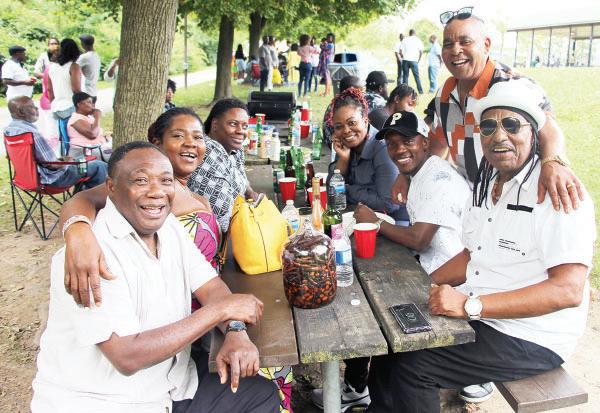
















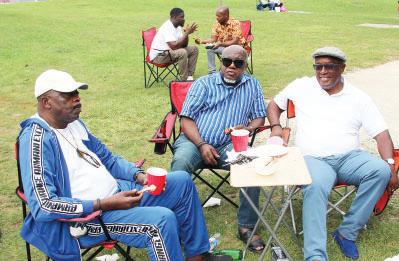
















By Emmanuel Ayiku, Toronto, ON
The Ga Adangbe Association in Toronto have celebrated their annual Homowo Festival in style at the Malton Park. Homowo which literally means “hooting at anger” is celebrated by the Ga in Ghana.
The Chief of the Ga Adangbe’s in Toronto performed the rites as custom demanded and climaxed it by sprinkling “kpekpele”, a popular dish used specifically for this festival.
.The Deputy Consul General of the Ghana Consulate in Toronto, Mrs. Joyce Asamoah-Koranteng who graced the occasion said she is overwhelmed with joy to be part of the celebration.
She said celebrations such as this not only serves as a reminder of one’s roots but also goes a long way to educate the younger generation in the diaspora.
There were lots to eat and drink
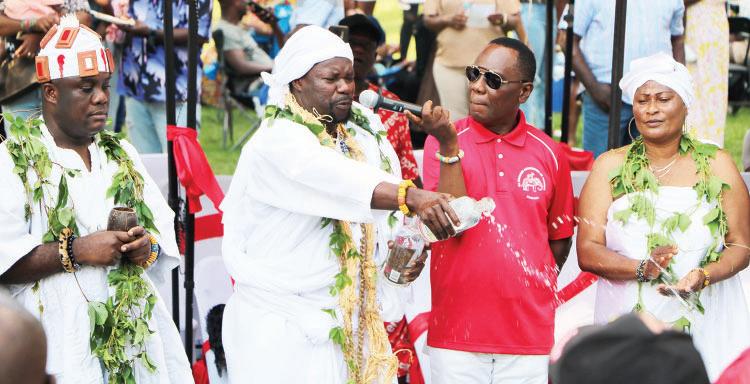

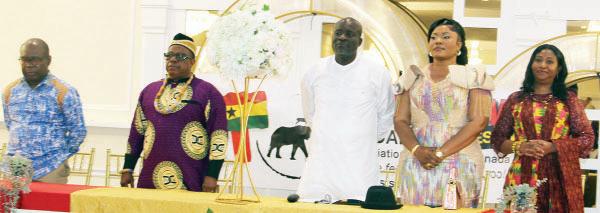





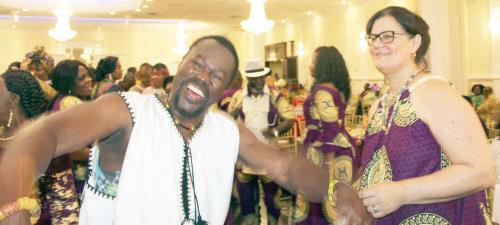




By Emmanuel Ayiku, Port Dover, ON

Northwood Neighborhood Services in collaboration with the African Canadian Social Development Council (ACSDC) organized a day trip for seniors to Port Dover on Wednesday, August 7th 2024. It was a memorable experience for many of the seniors on the Riverboat Cruise.



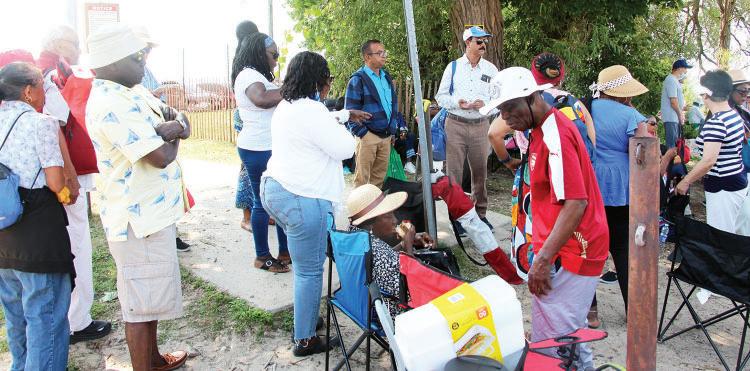




NDP Leader Jagmeet Singh has pulled his party out of the supply-andconfidence agreement that’s helping keep Prime Minister Justin Trudeau’s minority Liberals in power.
In a video posted on social media Wednesday, Singh announced he’s decided to cut ties with the governing party ahead of the fall sitting of Parliament because he thinks the Liberals are “too weak” and “too selfish” to fight for the middle class and stop the Conservatives.
“Today I notified the prime minister that I have ripped up the Supply and Confidence Agreement,” Singh says in the video, recorded overlooking Parliament Hill. “The Liberals have let people down. They don’t deserve another chance from Canadians.”
“They cannot be the change, they cannot restore the hope, they cannot stop the Conservatives. But we can,” Singh says in the video, setting up the next election as a choice between his party and Conservative Leader Pierre Poilievre’s plans to cut.
The agreement was first signed in March 2022, and was set to expire in June 2025 when the House rises ahead of the next fixed-date election.
The deal was designed to inject stability into the minority Parliament, with the NDP agreeing to support the Liberals on confidence votes in exchange for progress on longstanding progressive policies.
Going forward, this means the Liberals will have to look for political support on a case-by-case basis on key votes, such as budgets, in order to stay afloat and stave off a potential election.
‘I am not focused on politics’: Trudeau

This major political announcement comes with just a week and a half to go before Parliament resumes, and less than a week before Singh and Trudeau are scheduled to meet with their caucuses to plot strategy for the fall sitting.
Reacting to the news – which he was only informed of shortly before Singh went public – the prime minister said he’s going to remain focused on Canadians’ concerns until the next election “hopefully not until next fall.”
“I’m not focused on politics. I’ll let other parties focus on politics. I’m focused on actually delivering the things that Canadians told me this summer they need,” Trudeau said, speaking at an announcement about the Liberals’ school food lunch program(opens in a new tab), in Rocky Harbour, N.L.
The prime minister also said he hopes the NDP stay focused on delivering for Canadians and help cement the policies they remain aligned on, in the face of their shared concern about prospective Conservative cuts.
“I think the NDP is going to have to make decisions about whether or
not they want to stand with Pierre Poilievre,” Trudeau said. “I certainly hope that the NDP will stay true to its fundamental values.”
Does this mean early election?
Poilievre hopes According to NDP sources speaking on background, Singh and his caucus arrived at a consensus that they would get out of the deal, earlier this summer.
Sources said the NDP came to this decision – and made the video announcing it – ahead of Poilievre coming out last week to push Singh to pull out of the two-party pact.
Poilievre’s pitch was for Singh to side with the Conservatives when MPs return to Ottawa and try and force an early election this fall, rather than wait until the fixed election date of October 2025.
At the time, NDP House Leader Peter Julian told reporters that “leaving the deal is always on the table for Jagmeet Singh.”
Reacting to the Liberal-NDP breakup, Poilievre said it’s time for Singh to put his votes where his messaging is.
“My message to sellout Singh is this: if you’re serious about ending your costly
carbon tax coalition with Trudeau, then commit today to voting for a carbon tax election at the earliest confidence vote in the House of Commons,” he said in a quickly-assembled press conference at 3 p.m. ET in Nanaimo, B.C.
The NDP have indicated that pulling their de-facto support for the Liberals doesn’t mean Singh is ready to push for an election, and so this move does not mean Canadians imminently heading to voting booths.
“Voting non-confidence will be on the table with each and every confidence measure,” the party said in a statement to media following the video’s release.
Responding to Poilievre, Singh continued his social-mediamessaging strategy Wednesday afternoon, posting(opens in a new tab) that Poilievre “sounds worried,” and “he should be.”
With a fall economic update and spring federal budget on the horizon, there are a few built-in moments ahead on the political calendar where the Liberals will be looking for a dance partner.
But, there’s also the prospect of an opposition party advancing a motion of non-confidence – as the Conservatives did related to the carbon tax, unsuccessfully last spring(opens in a new tab) – as soon as the Commons resumes.
It would take more votes than the Conservatives caucus of 119 and the New Democrats caucus of 24 have to have the majority support needed see Trudeau’s Liberal government and its 154 MPs fall on a vote of nonconfidence.
This leaves the Bloc Quebecois caucus of 32 MPs essentially holding the balance of power .Global News
The NDP has pulled out of a confidence and supply agreement with the Liberals. What happens now?
In March 2022, the Liberals and NDP penned a deal that would keep the minority government led by Prime Minister Justin Trudeau in power until June 2025 and move ahead on some mutually agreeable policies. It was called a confidence and supply agreement.
What happens now?
It does not necessarily mean an election will take place before next year.
It does mean the NDP will now vote on Liberal legislation on a case-by-case basis.
The first big test could come this fall if the government tables an economic
update in Parliament. If the Liberals survive, another decisive moment will be the vote on the next federal budget implementation bill, likely next spring.
What did the confidence and supply agreement involve?
There are two things that can topple a minority government: confidence votes and budget (supply) votes. The confidence and supply agreement was basically a promise by the NDP not to oppose the Liberals in those key moments as a way to keep them in power.
In exchange, the Liberals adjusted their legislative agenda to make room for some NDP priorities.
How was it different from a coalition?
A coalition is a much more formal
partnership. If the parties had opted for a coalition, New Democrat MPs would likely have had seats at the cabinet table, and might have been expected to align on legislation — even if they were not confidence votes.
How did it work?
The parties agreed to a list of priorities on which to advance, including a dental-care program for low-income Canadians and national pharmacare.
In exchange, the Liberals have counted on NDP support on the budget, budgetary policy and budget implementation bills. The NDP also promised not to move a vote of nonconfidence or vote for a non-confidence motion until the House rises ahead of the next fixed-date election, which would be in 2025.
An oversight group met regularly to make sure the agreement was still working for both parties.
What did the deal achieve?
The Liberals acted on several NDP priorities, including dental-care benefits, one-time rental supplements for low-income tenants, 10 days of paid sick leave for federally regulated workers and a temporary doubling of the GST rebate.
The New Democrats also used the deal to push forward items such as pharmacare, a ban on replacement workers during a strike or lockout at federally regulated workplaces, and a housing accelerator fund that allocated billions of dollars to help build homes across Canada.
The Canadian Press.


21 Years of Experience in Family Law
Member of the Law Society of Upper Canada, York Region Family Law Association, Duty Counsel for 47 Sheppard Avenue Court, Experience in Dealing with Domestic Violence Cases, Former Lawyer for Men’s Divorce Centre, Member of Legal Aid Appeals Committee
Professionals specialized in the following areas of practice:
Immigration Law Other Practice Areas
* Family Class Sponsorships * Uncontested Divorce
* Sponsorship appeals * Small Claims Court Matters
* Refugee Claims * Landlord and Tenant Matters
* Humanitarian Applications * Power of Attorney
* Invitation Letters * Agreements and Wills
* Visa extensions
* Work and Study Permits
* Bankruptcy Consultation
James A. Kwaateng, B.A. (Hons); LLB (Hons); CCIC Legal consultant; Commissioner of Oaths
Tel. (416) 743-2758 Fax: (416) 743-7027
168A Oakdale Rd., Suite 4, Toronto, Ontario, M3N 2S5.
Barrister, Solicitor & Notary Public law office of osei owusu
REAL ESTATE LAW
Buying a home may be the most important investment in your life. We ensure that it is done properly
* Buying and selling your home
* Transfers of property
* Placing Mortgages, Refinancing
FAMILY LAW
Divorce
Custody, Access and Support
Separation Children Aid Cases
CRIMINAL LAW Adult Criminal Code offences Youth Criminal Justice Act (Young Offenders)
IMMIGRATION
Sponsorships Sponsorship Appeals Humanitarian and Compassionate Cases
Also: Wills, Powers of Attorney, Foreign Divorce Opinions, Affidavits and Declarations, Certifying and Notarising documents
1315 Finch Avenue West, Suite 318, Toronto, Ontario, M3J 2G6 (Keele/Finch) Tel: 416-614-1001 Fax: 416-614- 6161 DIVORCE CUSTODY CAS MATTERS ACCESS CHILD SUPPORT SEPARATION AGREEMENTS DIVISION OF ASSETS
cont’d from pg. 33
Deal not a political winner for NDP: Nanos
Beyond the big-picture election questions, sources tell CTV News that based on what party campaigners were hearing while door-knocking for the Sept. 16 federal byelection in Montreal, they felt it would help them to try to secure the Liberal seat by severing ties with Trudeau now.
Though, CTV News’ pollster Nik Nanos said Wednesday, the NDP have not politically benefited from their parliamentary pact, with the party still ranking lower than the Liberals.
“Maybe it’s a moral victory from a policy perspective, but it sure isn’t a political victory in terms of gains in ballot support for the New Democrats,” Nanos said.
He’s still not sure the New Democrats would want to go to the polls until they’ve had enough time to differentiate themselves as the progressive choice for change.
“Jagmeet Singh’s video announcement basically was an election campaign advertisement, and Justin Trudeau response, Pierre Poilievre’s response all sound like there’s a full on election right now,” Nanos said.
“Every single debate, comment, motion, bill in the House of Commons will now be seen through the lens of a potential election that is going to be closer today than it was yesterday.”
Deal was to last until June, main policies achieved
In the years since the deal was secured, the federal government, with the help of the NDP, have advanced a series of progressive policies.
Among what has been accomplished is a major expansion of free Canadian health care through a national dental care program and the first phase of a

national pharmacare policy promising free contraceptives and diabetes medications.
However, the broader national pharmacare framework legislation has yet to clear the Senate, and the government is still working on securing agreements with provinces and territories on providing access to these benefits.
The government also passed an early learning and child-care act, anti-scab legislation, sustainable job protections, and paid sick leave for federallyregulated workers.
And while other policies are still in the works, when looking through the pages of the agreement, there was arguably little left to finalize over the months that were left in the deal.
Included in what remains outstanding are a series of electoral reform-related initiatives that are still working through the House with amendments ahead, and a promised safe long-term care act has yet to be tabled.
The deal falling apart now comes after the Liberal cabinet retreat in Halifax last week, where next steps on these and other ongoing housing and reconciliation efforts may have been discussed.
Speaking to reporters at the gathering of the prime minster’s front-bench, Government House Leader Karina Gould told reporters that she was “fairly confident” the “strong agreement” would go the distance.
NDP sources told CTV News that the prescribed leadership and oversight group meetings baked into the deal –and meant to assess ongoing progress – have not been productive for months, citing animosity between the PMO and senior New Democrats.
CTV News




















By Emmanuel Ayiku, Toronto, ON
Mr. Chris Campbell, the Director of Equity, Diversity, and Inclusion at Carpenters’ District Council of Ontario, and a member of the George Brown College Foundation Board of Directors, has created a new endowment scholarship for Construction and Trades students at George Brown College.
Beginning in 2023, the Chris Campbell Perseverance Award will support full-time students enrolled at the Angelo DelZotto School of Construction Management and the School of Apprenticeship and Skilled Trades at the Centre for Construction and Engineering Technologies. These programs offer hands-on training that provide the technical expertise and the skills critical to excel in these industries. Furthermore, this award will highlight and recognize the achievements of BIPOC (Black, Indigenous, People of Colour) students in these programs, who demonstrate passion and commitment to their field of study through their extra-curricular activities, volunteer work, and involvement in the classroom.

Chris Campbell,
Please consider donating to this scholarship fund today. Tax receipts are available for eligible donations.
For additional information, please contact Gabriella Goutam at the George Brown College Foundation at gabriella.goutam@georgebrown. ca or 416-415-5000 ext. 3289.













By Edmund Agbeko, Toronto, ON
Clad casually in slacks and a light orange Adidas golf shirt, Dr. Ben Okyere stretched a hand to welcome me to their residence for this interview together with his wife, Dr. Adwoa Okyere. As I made myself comfortable in their living room, there came their two Golden Retriever dogs running up and down the stairs as they playfully enjoyed each other’s company. For me, that was an awesome sight and it came as no surprise when Dr. Ben Okyere remarked light-heartedly: “Meet The Doctors” as he served me a Sobolo (Hibiscus) drink with ice. Shortly, his beautiful partner came to join us for this interview, where we talk over about their success story of maintaining a near-perfect young black family home with love and peace.
Dr. Ben Okyere: For me, Love is a universal language that we all define in our own terms but in my perspective, Black Love is a bond that goes deeper than words and allows us to reimagine in our Black lineage and connections while celebrating black fineness. Black love is breaking the stereotype surrounded around Black relationships because the more people see normal black couples in healthy relationships, the more that image becomes a myth.
Dr. Adwoa Okyere: Black love is the acknowledgment of making sacrifices as a couple in a relationship because our love works best when we complement each other; where I’m weak; he’s my strength. The fact that Ben is able to bring our conversations to life, makes him my knight in shining armor. Love is not built overnight; it is built over time, and it only gets stronger and sweeter with time for those who are willing to put in the work.
Dr. Ben Okyere: No my brother [with a broad smile] but we have to put in the hard work. I have had family and friends ask us over and over and as always, I keep on saying that, your relationship is what it is, based from the efforts you put into making it a success. Falling in love is easy but maintaining the love and happiness are full of twists and turns. For me, I see her as for who she is and I respect her for what she stands for; and that generates a mutual appreciation of each other and that makes us to understand and communicate better. You have to remember, communication is very key and that has been our success story.
Dr. Adwoa Okyere: I share the same

opinion because regrettably to say, many relationships end today over hassles that could have been averted. I saw a huge difference when I decided to open up more and communicate with him over my concerns than talking about it with friends and family in our early stages of our relationship. Looking back at it, I think I was very childish and petty but now,
Ben has molded me into the woman that I have always wanted to be and I am very grateful for that. When I look at the conversations we do have now, I see an enormous growth in myself and I must admit that, it took your [whilst looking at Ben] efforts to help me become the woman that I am today.
cont’d on pg., 49
By Joe Kingsley Eyiah, Toronto, ON
The Hub of the Ghanaian Canadian Association of Ontario (GCAO) at 65 Mayall Avenue in Toronto was busy with 2-week Modern Batik workshop for some selected Ghanaian youth under the dynamic instructions of the renowned artist, David Kibuuka from Uganda
and prolific Toronto based fashion designer, Lorena Andrea.
The training which started on August 12 to August 23 was sponsored by the Toronto Arts Council.
The ultimate aim of this intensive training was to

move the selected young people and to equip the youth to the next level of entrepreneurship in the creative industry for the benefit of the Toronto Ghanaian community. This falls in line with the objectives of GCAO of creating opportunities for the youth to maximize
their potentials for self development and that of the Ghanaian Canadian community in Canada. The GCAO is linking up with local textile printing industries and promoters in the Greater Toronto region to make this possible for the youth as soon as possible.

By Emmanuel Ayiku, Toronto, ON





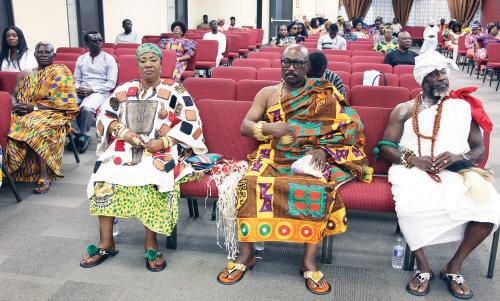


Annual Cultural Day at the Apostles’ Continuation Church was held on Sunday, August 4th, 2024. Members of the church displayed their culture costumes. On that day some cultural representative (Nananom) of the Ghanaian Community were invited to the church to offer some advice on cultural values and identify. They also advice on maintaining our cultural identity and heritage.








Annual Picnic Saturday, August 3rd 2024














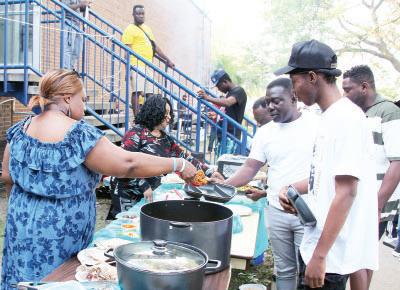












( SOCIETIES UNDER THE GHANA METHODIST CONFERENCE)
The Superintendents Minister-In-Charge invites you to worship with us
Toronto Society
Place of Worship: 69 Milvan Drive, North York, Ont. (Finch Av./Milvan)
416-743-4555 (Office) 905-216-2323 (Residence)
Day and Time of Worship:
Sunday: Bible Class Meeting: 10:00 a.m. - 10.30 a.m.
Church Service: 10:00 a.m. - 1:00 p.m.
Jericho Hour Prayer Meeting - 8:00 p.m. - 9:00 p.m.
Wednesday Mid-day Prayer - 1:00 p.m. - 2:00 p.m.
Friday: Bible Teaching/Prayer Meeting 8:00 p.m. - 9.00 p.m.
Saturday Organizational Meeting: 6.30 p.m. - 9.30 p.m.
Sunday Brampton Prayer Meeting 8:00 p.m.
Edmonton Methodist 778-237-7339
Ottawa Methodist 613-315-3443

BETHANY METHODIST CHURCH-BRAMPTON
PLACE OF WORSHIP-1A KNIGHTSBRIGE ROAD (Senior’s Lounge)
Sunday Divine Service - 2PM-5PM Online Prayer Meeting Fridays at 8PM -9PM 416-800-4317
Code # 9632581
Contact: Robert Frans (289-541-5579) Felix Gyimah (289-931-8443)
Methodist Church
Location: 955 Wilson Ave., Unit 12, North York, ON
Weekly Service Schedule: Monday 7 pm - 8 pm
Online Bible Study: Thursday 7 pm - 8:30 pm, Prayer Meeting Friday 7:30 pm - 9 pm
Divine Service, Sundays 10 am - 12:30 pm
Contacts: Agnes Donkor - 647-881-4808, Felicia Owusu - 647-533-1093, Grace Kubi - 647-608-5373
Holy Trinity Methodist Church, Montreal
Place of Worship: 455 Church Street - Beaconsfield Qc H9W 3S6
Day and Time of Worship
Sunday Divine Service: 12:30 p.m. - 3:30 p.m.
Friday Prayer Meetings: 7:00 p.m. - 9:00 p.m.
Contact: Bro. Joselin Twumasi 438-881-6640
Ebenezer Methodist Church
Stoney Creek United Church (Chapel)
1 King Street West, Stoney Creek, Hamilton
Contact: Bro. Kofi Bonsu 289-684-6074
Worship Time: 11 am to 1 pm
Peniel Methodist
Church Vancouver #2322 1248 82 Ave. Surrey, BC, V3W 3E9 Sister Comfort T. Owusu 647-895-7131
Worship Time: 9 am to 10:30
SERVICES ARE CONDUCTED FOLLOWING THE TRADITIONAL GHANA METHODIST LITURGY. PLEASE COME AND JOIN US. WE HAVE A PLACE FOR YOU. GOD RICHLY BLESS YOU

“No one ever told me that grief felt so like fear. I am not afraid, but the sensation is like being afraid.” (From “A Grief Observed”) C.S. Lewis
“Grief, as I read somewhere, is a form of praise. It is the natural way love honors what it misses.” Elisabeth Elliot
“Nothing can make up for the absence of someone whom we love, and it would be wrong to try to find a substitute; we must simply hold out and see it through. That sounds very hard at first, but at the same time it is a great consolation, for the gap, as long as it remains unfilled, preserves the bond between us.” Dietrich Bonhoeffer
“When life is hard and you are in the midst of difficult circumstances, it’s easy to think that God doesn’t care. But remember this: He cares so much for you that He gave His only Son to die for you.”
Joni Eareckson Tada
“Occasionally weep deeply over the life you hoped would be. Grieve the losses. Then wash your face. Trust God. And embrace the life you have.” John Piper INTRODUCTION
Grief is a profound and complex experience that touches every aspect of a person’s life. As Christians, we are called to “mourn with those who mourn” (Romans 12:15, NIV) and to provide comfort, love, and support to those who are grieving. Supporting someone through their grief is not only an act of compassion but also an expression of our faith in action.
Here are 7 Christian principles to guide us as we walk alongside those who are grieving.
1. BE PRESENT WITH COMPASSION
One of the most powerful ways to support someone who is grieving is simply to be present. The Bible shows us that Jesus Himself was moved by compassion when He saw others in pain. When Lazarus died, Jesus wept (John 11:35), even though He knew He would raise Lazarus from the dead. This teaches us that it’s okay to share in the sorrow of others, even if we believe in the hope of eternal life.
Being present means offering a listening

ear, a shoulder to cry on, or simply sitting quietly with someone in their pain. Your presence can be a reminder of God’s unfailing love and care during times of deep sorrow.
2. OFFER PRACTICAL HELP
Grief can make even the simplest tasks feel overwhelming. As Christians, we are called to serve one another in love (Galatians 5:13). Offering practical help—such as cooking meals, helping with household chores, or running errands—can relieve some of the burdens on a grieving person.
Remember that grief doesn’t follow a specific timeline. Your offer of practical help is just as important weeks or months after the loss as it is in the immediate aftermath.
3. SPEAK WORDS OF COMFORT AND HOPE
The Bible is rich with promises of God’s comfort and hope. Sharing scripture that speaks to God’s presence, love, and the hope of eternal life can be a source of great comfort to someone who is grieving. Verses such as Psalm 34:18 (“The Lord is close to the broken-hearted”) and Revelation 21:4 (“He will wipe every tear from their eyes”) can remind the grieving person that God is near and that there is hope beyond this life.
However, it’s important to be sensitive with your words. Avoid clichés or platitudes that can seem dismissive of the person’s pain. Instead, offer heartfelt words that acknowledge their sorrow while pointing them to the hope we have in Christ.
4. ENCOURAGE REMEMBRANCE AND EXPRESSION
Grieving individuals may find comfort in remembering their loved one. Encouraging them to share stories, look through photos, or participate in activities that honor the memory of their loved one can be healing. The Bible often encourages remembrance, such as when God commanded the Israelites to set up memorial stones to remember His faithfulness (Joshua 4:1-7).
Additionally, allowing someone to express their grief openly, whether through talking, crying, or other means, is crucial. Grief is a process, and expressing it helps to process the loss.
5. PRAY WITH AND FOR THEM
Prayer is a powerful tool for bringing comfort and peace. Praying with a grieving person can bring them closer to God and remind them of His presence in their darkest moments. Even when words fail, the Holy Spirit intercedes for us with groans that words cannot express (Romans 8:26).
Continue to pray for the grieving person in private as well, asking God to give them strength, peace, and comfort. Let them know that they are being lifted up in prayer by their Christian community.
6. RESPECT THEIR GRIEVING PROCESS
Grief is a deeply personal experience, and everyone grieves differently. Some may want to talk about their loved one often, while others may withdraw for a time. Some may cry openly, while others may appear stoic. As Christians, we need to respect each person’s unique process and avoid imposing our expectations on them.
Instead, offer unconditional love and support, allowing them the space to grieve in their own way and time. Remember that God is at work in their lives, even in the midst of their pain.
7. CONTINUE TO SUPPORT THEM OVER TIME
Grief doesn’t end after the funeral. In fact, the weeks and months following the loss can be the most challenging as the reality of the loss sets in. As a Christian community, we must continue to offer support long after the initial shock has worn off. Regularly check in, offer invitations to social gatherings, and continue to provide practical help as needed.
Your ongoing presence and support can be a lifeline to someone navigating the long journey of grief.
Supporting the grieving is a sacred responsibility for Christians. It is a way to embody the love of Christ and to be His hands and feet in the world. By being present, offering practical help, speaking words of comfort, encouraging remembrance, praying, respecting the grieving process, and providing ongoing support, we can help those who are grieving find solace and hope in the midst of their sorrow.
As we walk alongside those who mourn, let us remember the words of Jesus: “Blessed are those who mourn, for they will be comforted” (Matthew 5:4). May we be instruments of that comfort, reflecting the love and compassion of our Savior.







Address: 101 Westmore Drive, Unit 206, Etobicoke (Highway 27/Finch)
Time of Worship: 10am - 12:15pm
Contact: Bro. Fordjour Acheampong: 416-671-4268
Bro. Agyenim Boateng: 647-656-9905
Email: churchofchristtwiservice@gmail.com
Bro. Christian Kpodjie: 647-405-2068
Website: churchofchristghtoronto.com

Lead Pastor: Rev. Nana Boateng
SUNDAY SERVICES:
9:30 am-1:00 pm - Ghanaian Service
WEEKDAY SERVICES:

Rev. Nana Boateng
Wednesday - Bible Studies 7:00 pm - 9:00 pm Friday - Holy Ghost Service 7:00 pm -9:00 pm
LOCATION: 42 Steinway Blvd. Unit 1&2
(Hwy 27/Steeles) Toronto, Ontario, M9W 6Y6
Tel: 416-740-1200 Fax: 416-740-6435
Email: lighthouseagtoronto.org lighthouseag@outlook.com
Invites you all to come worship with us
Venue: 95 Eddystone Ave unit 4 North York, ON
Time of worship: Sunday:10am - 1pm
Wednesday bible studies 7pm - 9pm Friday Prayer / Deliverance 7pm - 9pm

Pastor-in-charge: Pastor Eric Amoah
Tel: (416) 748-1242 Cell: (416) 300-9970
Church Services
Sunday Service:
Bible Study: 10 a.m.-11a.m.
Worship Service: 11a.m. - 1p.m. Wednesday: Bible Study 6:30p.m.-7:30p.m. Friday Night Prayer: 8p.m.-10p.m.


Tel: 416 667-9763 cell 647 500-4415 / 647 718-4819 / 416 300-4258
Email:pastorjsarfo@gmail.com
I encourage you to join us in worship regardless of your situation the power of God is available to make you whole
Location: 14 Haas Rd. , #100, Etobicoke, ON, M9W 3A2
Do you desire to experience the power and the presence of God demonstrated in your life?
Do you want to experience the marvelous work of God's grace in your life?
Then, Bethel Prayer Ministry International would like to invite you to visit their church where the word of God is preached powerfully to release the power of God in your life.

COME AND YOU WILL BE BLESSED
Contact: Cell. 416-400-8211 Church 416-642-0390
Worship Hours: Sunday Service: 9am - 1pm Tuesday 9am - 2 pm Consultation
Wednesday: 7pm - 9p.m. Friday: 9pm - 12 pm
Saturday (Prayer Warriors) 6pm - 8pm
Location: 52 Carrier Drive, Unit 12, (Albion/Hwy 27) Etobicoke, Ont., M9w 5S5

Join us on Sundays for Worship at: Venue: 161 Lakeshore Road W, Mississauga, ON Time: 10:30am—1:30pm
Contact: Rev. Isaac K. Bonful Tel: 289-814-5482
Email: transformationcentreag@gmail.com Website: www. transformationcentreag.ca
Be transformed by the renewing of your mind… “Rom.12:2a





cont’d from pg. 22
Therefore, in addition to developing improved varieties, research systems have developed complementary improved agronomic technologies.
These include minimum tillage, spacing, planting density, fertiliser application, use of cover and green manure, weed control, disease control among others.
Minimum tillage
The practice of minimum tillage in cassava production is strongly recommended. Farmers are advised to slash but not burn their entire farm, instead practising spot burning when necessary. Minimum tillage is especially recommended in sandy soils to conserve soil moisture and reduce soil erosion.
A recommended plant population of 10,000 plants/ha with 1x 1m for the sole cassava crop is recommended.
However, a wider row spacing (up to two m between rows) and closer in-the-row spacing (down to 0.5 m) is recommended for intercropping. While cassava can thrive better than most other crops in impoverished soils, the crop does respond well to both inorganic and organic fertilisers.
An inorganic fertiliser application rate of 200 kg of N-P2O5-K2O 15-15-15/ha or 20 g per plant is recommended.
Intercropping
Intercropping or rotation with legumes and green manure can improve the nitrogen status of the soil through nitrogen fixation.
In areas where ploughing is used, farmers are advised to plough leguminous cover crops, such as, mucuna to improve the soil’s organic matter and nutrition. Mucuna, also known as mucuna pruriens, is a plant in the legume family that is native to the tropical and subtropical regions of the world. The plant is also known as the ‘velvet bean’ due to the hairs that cover its seedpods.
Animal manure, such as, cow dung, poultry droppings and other livestock dung can also be applied during land preparation. These approaches would sustain soil and cassava productivity on limited land resources to address deforestation and land degradation.
Conclusion
Cassava production as an industrial and income generation crop to improve livelihood is possible. However, integration with other crops and rotation with legumes would reduce its negative implications on food security.
The use of two-node cuttings of improved varieties and accompanying agronomic packages would improve cassava production in the face of limited land resources and climate change in Ghana.
The writer is a Snr Research Scientist, Crops Research Institute, Council for Scientific and Industrial Research (CSIR)
Researchers in London, Ont., say they were able to detect awareness in a comatose patient with a brain injury – a finding that could significantly impact patient care.
Karnig Kazazian, a research associate at Lawson Health Research Institute and the London Health Sciences Centre, says a neuroimaging technique was used to shine a light into three patients’ brains to find activity in response to different commands.
The patients had already been deemed clinically unresponsive, meaning they had not reacted when asked to give a thumbs up, wiggle their toes or open and close their eyes.
But Kazazian says one of the patients showed significant neurological activity in the correct part of the brain when they were asked to imagine playing tennis.
He says the finding, published recently in The Proceedings of the National Academy of Sciences journal, builds on previous research that suggests 15 per cent of comatose patients have some cognitive awareness even if they appear unresponsive.
Kazazian says the technology should be made available to intensive care units across the country, as it could help doctors and family members make decisions about whether to continue aggressive care if the patient shows signs of awareness.
”By showing that some patients might still be ‘in there’ despite behaviourally showing no signs, you can imagine that this would really greatly influence that decision of whether or not you stay on life support or transition to passing away peacefully,” said Kazazian, who was co-lead author of the study.
cont’d from pg. 39
NOURISHING A BLACK RELATIONSHIP
Dr. Ben Okyere: For me, the fact that God and religion is our support system has been one of our vital rudiments in building our relationship. The fact that we were friends first has allowed our relationship to be firm amidst our challenges all these years. Genuinely, having her as my partner meant, my wins are her wins and my losses are her losses too. Again, because of our race, embracing our culture and our origins allows us to have a better understanding of ourselves; hence, improving our connection. Honestly speaking, it feels great to love a Black woman from my perspective and I will want to be with her in the next life.
Dr. Adwoa Okyere: Having occupations that are especially demanding today are ruining relationships one way or the other but I believe, it is important to figure out which roles you both play in the relationship. Even when your enthusiasm is to provide for your family, it’s significant not to use this excuse as a justification for ignoring the needs of your partner. I believe in communication because for me, is a two-way street. You have to be able to listen and abstract the good and bad just as you need to be able to articulate your opinion and emotions in a way that your partner can understand. It can be difficult to repair relationships if you ignore the needs of your partner for too long as research has shown that, active listening improves relationships by increasing trust while reducing conflict. To find Love, Power & Intimacy in a relationship, mutual respect is key.
The researchers also saw activity in the part of the patient’s brain responsible for processing auditory information when they played “complex stories.”
But the task of imagining playing a game of tennis — a test the researchers repeated five times — was the most telling sign of awareness, Kazazian said.
It triggered activity in the patient’s premotor cortex — the part of the brain that imagines movement.
“Previous work from our group has shown that you have to be conscious in order to imagine playing tennis. You have to be ‘in there’ because that’s not something that you just automatically do without any awareness,” Kazazian said.
In a less robust response, another unresponsive patient appeared to have the ability to passively perceive speech, the study found. A third patient showed no response to any of the task commands.
The light technology, called functional near infrared spectroscopy (fNIRS), shines light into the brain.
“More light absorption means more brain activity,” he said.
Before using fNIRS on the three comatose patients, the researchers tested it on more than 100 healthy participants to determine what tasks and commands were most effective at eliciting brain activity.
More research is needed with more patients to determine whether or not the brain activity detected is associated with a patient’s prognosis, Kazazian said.
His research group is in the midst of doing that with ICU patients whose families give consent.
The team will also study whether or not the fNIRS technology can be used to communicate with patients while they are comatose, Kazazian said.
The Canadian Press
* Rust *Minor Repairs and Painting
Sammy Lartey 416-659-1655
172 Toryork Dr., #9, North York, Ont.
56 Penn Drive, North York (Finch/Milvan)
Air Conditioning Service Tune-ups, Brakes, Mufflers, General Repairs Service to all imports
Specializing In: Paul Nsiah, Manager Tel: 416-746-3275

Bacterial infection roaring back post-pandemic after global drop in immunity, scientists say
The classic sound of whooping cough is grating and unmistakable: A harsh, deep hacking that’s often followed by a distinctive “whoop” as patients struggle to breathe.
It’s not the kind of infection anyone wants to get, and for vulnerable individuals, it can turn deadly. But the number of people catching it recently in Canada — kids and teens, primarily — is soaring to staggering levels.
More than 12,000 cases of whooping cough, also known as pertussis or the 100-day cough, have been reported to date in 2024, the Public Health Agency of Canada (PHAC) told CBC News, citing media reports from across the country. That’s far higher than the roughly 500 to 4,500 nationwide infections typically reported each year.
Caused by a bacteria called Bordetella pertussis, the vast majority of this year’s whooping cough cases are in Quebec, though various other provinces also started experiencing outbreaks or higher-than-usual case counts in recent months. So far, the disease is mainly striking youth aged 10 to 14, Quebec health officials recently told The Canadian Press.
“Although increased pertussis activity is expected after record-low activity during the pandemic years … the numbers of cases seen in Quebec, New Brunswick, Prince Edward Island and Newfoundland and Labrador in 2024 exceed pre-pandemic peak years,” a PHAC spokesperson said in a statement.
The massive spike in infections echoes a similar trend seen in the U.S. and across Europe over the last year. And scientists familiar with whooping cough say the surge is caused by a confluence of factors, creating a perfect storm that’s putting society’s youngest at risk of serious illness.
“I think what happened is not a surprise given the cyclical nature of how we see pertussis, but what’s a surprise is the magnitude and the scale,” said clinician-scientist Dr. May ElSherif, the associate director for laboratory management at the Canadian Centre for Vaccinology in Halifax.
Whooping cough cases are spiking across multiple provinces, with the most dramatic surge in Quebec. Doctors warn that infants and young children are most at risk, with many urging vaccination.
‘Adults often break their ribs’ Pertussis is highly contagious, and while symptoms can be mild for many individuals, infections can also lead to pneumonia, brain damage or lifethreatening illness.
“Whooping cough isn’t just something that’s kind of in Victorian novels. It’s something that people still get and it can be very disabling,” said infectious diseases specialist Dr. Amesh Adalja, a senior scholar at the Johns Hopkins Center for Health Security in Baltimore.
“Adults often break their ribs because they cough so violently.”
But newborns, particularly those who don’t yet have any protection from pertussis vaccines, are also among those getting the sickest or even dying, stressed Dr. Jesse Papenburg, a clinician and researcher with the Montreal Children’s Hospital.
“It’s really children — young children, infants, and especially those around six months of life — that are at highest risk of complications,” he said.
During Europe’s recent pertussis outbreak, which involved more than 60,000 total cases throughout 2023 and the first quarter of 2024, at least eight older adults died along with 11 infants, according to the European Centre for Disease Prevention and Control.
So what’s behind these surges?
One factor is simply the usual ebbs and flows of pertussis, which tends to circulate more in some years than others. It’s not uncommon to have localized whooping cough epidemics, noted Dr. Anna Banerji, a pediatric infectious diseases specialist and associate professor at the University of Toronto.
“A lot of these bacteria and viruses are cyclic,” she said, “and so they come in waves.”
3 to 5-year cycles
While some pathogens evolve rapidly and strike every year, pertussis tends to rise and fall over three to five-year cycles, which is likely linked to shifting patterns in population-level immunity as new, susceptible groups provide the bacteria with fresh “kindling” to spark outbreaks, Adalja explained.
“There’s always new people being born into the population that don’t have immunity,” he said.
That can mean infants born to unvaccinated mothers — those who didn’t get a pertussis booster shot during their pregnancy, which can transfer protection to the fetus — or young children who didn’t receive their full set of routine immunizations.
Immunity provided by vaccines or prior pertussis infections also doesn’t last for life, noted the Canadian Centre for Vaccinology’s ElSharif. “The current vaccines we have aren’t the best,” she said. “They don’t offer lifelong protection, but we do encourage people to take them, because they do, for the short-term, offer protection against disease.”
While those societal trends may explain whooping cough’s usual ups and downs, multiple scientists and clinicians agreed that what’s playing out right now, with case counts suddenly soaring, is likely yet another aftershock of the COVID-19 pandemic.
Ripple effects from COVID-19 pandemic
During the early years of the pandemic, amid countries’ various reactions on travel and gatherings, respiratory illnesses like pertussis and influenza largely vanished.
One retrospective study published in 2022, focusing on 20 health care facilities in the U.S., found there was “no whooping cough during the first year of the COVID-19 pandemic” whatsoever.
“Basically what the pandemic did was that the rate of immunity through natural exposure went down,” said ElSharif.
Various infections came roaring back once pandemic restrictions were lifted. Influenza, respiratory syncytial virus (RSV) and a form of bacterial pneumonia all made headlines for resurfacing in larger waves, or at unusual times, in recent years — at times overwhelming hospitals in Canada and beyond. Whooping cough, it seems, is just the latest to rear its head.
At the same time, there were major disruptions to routine immunization programs, leading to years of catch-up.
Duration5:04
An exclusive look at a lab where Canadians are getting sick on purpose to help scientists study whooping cough — and one day develop a new vaccine. Globally, the vaccination rate for three doses of the diphtheria-tetanus-pertussis vaccine fell from around 86 per cent in 2019 to 83 per cent in 2020, meaning 22.7 million children around the world missed out, estimates from the World Health Organization and UNICEF suggest.
In New Brunswick, officials recently warned of a growing whooping cough outbreak, with more than 140 cases so far this year, far exceeding the five-year annual average of 34. There, recent vaccination rates among children are around 80 per cent — fairly high, but still low enough to fuel more spread.
“The further away from 90 per cent up-to-date immunity we get with very infectious respiratory things, whether it’s a virus or a bacteria, then we start to see the opportunity for outbreaks,” Dr. Lisa Barrett, an assistant professor at Dalhousie University’s School of Medicine, told CBC New Brunswick.
Scientists are hopeful this global surge of pertussis will die down, with the bacterial infection eventually settling
back into more predictable patterns.
Yet given its toll on vulnerable groups, and the lack of durable protection from current pertussis vaccines, there’s a growing push to quash whooping cough beyond these recent outbreaks.
Part of the challenge is the makeup of commonly-used pertussis shots, noted Adalja. Earlier versions were whole-cell vaccines, referring to a form that’s prepared in labs using entire cells, which can lead to a potent immune response. In the case of pertussis shots, the approach led to major drops in infections — but the vaccines were also linked to more serious side effects.
The type of shot now used around the world is an acellular vaccine, which doesn’t use any whole virus or bacteria cells but instead relies on purified fragments of a particular pathogen.
Both forms are effective, data shows, but the protection provided by acellular shots tends to drop more quickly, leaving people vulnerable to infections sooner.
That’s a key part of the reason why whooping cough is still around despite decades’ worth of immunization campaigns, Adalja said.
At the Canadian Centre for Vaccinology, ElSharif’s Halifaxbased team has spent several years conducting human challenge trials for pertussis — in which adult patients are willingly getting infected under strict monitoring — in hopes the study will help inform how to develop more effective vaccines.
While results aren’t published just yet, ElSharif said her team has gained new insight into how pertussis operates inside the body, including confirmation that for some adults, active infections don’t lead to any symptoms, meaning some individuals may be able to silently spread it to other vulnerable groups.
Given the global toll of whooping cough even before this year’s massive outbreaks, with an estimated 160,000 annual deaths among children under five, ElSharif said it’s crucial to focus on beating back this vaccinepreventable disease.
“The pathway to a vaccine is not a short one,” she said. CBC News
From acupuncture to yoga to massage, many Canadians have tried traditional approaches, says researcher
Caldwell Lever first tried traditional Chinese medicine years ago “out of desperation,” while struggling with a chronic illness.
“My back was to the wall,” he said. “Within 24 hours, I was a different person.”
He was won over by an approach he described as more holistic than what he’d experienced before: practitioners “interested in how I’m feeling: not only my blood work, but what my dreams are like,” Lever explained.
Lever is now midway through studies for a traditional Chinese medicine (TCM) diploma at Kwantlen Polytechnic University, which this summer announced it will launch Canada’s first bachelor’s degree in the field.
“I was really blessed to find amazing doctors and then amazing teachers [who helped] me bridge that moment from being a patient to wanting to help people, become a practitioner.”
Greenlit by the B.C. government to
fill what it calls rising demand in the labour market, the new program marks a major step in Canadian recognition of TCM, proponents say, and comes amid a growing international spotlight on traditional medicine. However, skeptics of TCM and other alternative approaches remain wary of movement in this direction.
Traditional Chinese medicine is a system based on the concept of balancing an energy force — called qi — flowing through the human body through a range of practices, including acupuncture, herbal remedies, massage and diet.
It is regulated in British Columbia, Alberta, Quebec, Ontario and Newfoundland and Labrador, with more than 7,000 licensed practitioners, herbalists and acupuncturists working in these provinces today, according to the Canadian industry’s regulatory body.
John Yang has worked for nearly a decade toward Kwantlen Polytechnic’s bachelor’s degree, which will welcome its inaugural cohort starting September





2025. As chair of KPU’s TCM program, he hopes the new offering will boost its acceptance and encourage more integration with the Canadian healthcare system.
“The degree program can let the public [feel] more confident that we can train highly qualified TCM practitioners. Then there will be more mainstream public acceptance,” he said from the Richmond, B.C., campus.
“Currently we are not there yet, but I hope in the future there’s an integrated model.”
The degree will add topic areas like herbology and more advanced TCM approaches to the current diploma’s acupuncture-focused study, as well as courses in health sciences, arts and humanities, ethics and working with conventional health practitioners, says Sharmen Lee, dean of the B.C. school’s faculty of health.
“You’re getting a much broader, deeper education that allows you to develop additional competencies, such as being able to critically think, to evaluate and participate in research, and all of those other things that a university-based education can provide.”
Lee believes future graduates will be able to work alongside with biomedical professionals, with some becoming researchers as well — able to pursue post-grad studies abroad.
“They start to understand the fundamentals of conducting research, of reviewing published studies and then ... to critically analyze what that means so that they can apply that to their practice,” Lee said. “It’s going to help to elevate the practice of traditional Chinese medicine ... in our province.”
Researchers explore what’s safe, appropriate
With the World Health Organization (WHO) encouraging governments toward integrating traditional and complementary medicine into their health-care systems, there’s a need for researchers to develop strong evidence to guide policy-makers, says Nadine Ijaz, an assistant professor at Carleton University in Ottawa and president of the International Society for Traditional, Complementary and Integrative Medicine Research.
“Most Canadians at some point in their lifetime are using some form of what we call traditional and complementary medicine: that might be acupuncture, chiropractic, massage therapy, vitamins, yoga ... people who are participating in Indigenous healing ceremonies within their own communities,” she said.
“How are governments to make good determinations about what to include? What is rigorous? What is safe? What is effective and what is cost effective, in addition to what is culturally appropriate?”
Traditional medicine can help ‘illuminate ... from a different angle,’ says researcher
Nadine Ijaz, president of the International Society for Traditional, Complementary and Integrative Medicine Research, on how traditional perspectives can contribute to health systems today.
Ijaz is working with colleagues around the globe to determine research methods that are rigorous and appropriate for studying traditional and complementary medicine and policies for integration. Their report to the WHO will then inform recommendations for governments.
“I’m a scientist. I’m a researcher and so I’m fundamentally a person who is skeptical,” she said.
“If we find that research shows us that something is known to be safe, there’s a long history of use, it’s improving people’s well-being, improving people’s health ... I think it would be inappropriate to not keep our eyes open and our minds open in considering bringing those things into health systems.”
More research and scientific inquiry is a good thing, but it depends on the type of research, says Jonathan Jarry, a science communicator for the McGill Office of Science and Society and co-host of the health and medicine podcast Body of Evidence
Jarry said many studies on alternative medicine are low quality: too few participants, too short in duration, lacking follow-up or a proper control group. It’s an issue that plagues research on conventional therapies too, he acknowledged.
“I’m all for doing research on things that are plausible enough that they could realistically have a benefit, but then you have to also do very good, rigorous studies. Otherwise you’re just creating noise in the research literature.”
Ijaz and a group of colleagues around the globe are working toward determining strong research parameters without forcing alternative approaches “into a box where they don’t fit.”
For instance, a randomized controlled trial is the gold standard of research in biomedicine and excellent for studying pharmaceutical drugs and their effects, because participants in the control group get a placebo, perhaps a sugar pill, that means they can’t tell if they’re being treated with medication or not. But it doesn’t work for studying acupuncture treatment, chiropractic or even psychotherapy, Ijaz pointed out.
with Jonathan Baah Annobil

Ghanaian light heavyweight prodigy, Jonathan Mbanugu, AKA Jon Power, will take a second fight outside Ghana in as many months when he battles American slugger Kevin Johnson for the vacant Universal Boxing Organization (UBO) Continental light heavyweight title in the US next month.
Knockout specialist Mbanugu (10–11, 10 KOs) has the opportunity to clinch his first career title against the rugged Johnson (4-3, 1 KO), who has never been stopped, on the ‘Tale Of Garcia’ fight bill presented by former world champion Danny ‘Swift’ Garcia’s Swift Promotions at the 2300 Arena, Pennsylvania, on October 12.
The 22-year-old Mbanugu, of the Osibor Boxing Promotions and Management stable, began his pro career with 10 straight wins, all by stoppages, before settling for a split draw against tough countryman George Akoto in Kumasi back in July.
Jon Power then took his first international contest at the beginning of August, travelling all the way to Albania to wrestle local hotshot
Amarildo Bakaj for the vacant WBO youth light heavyweight belt. He succumbed to his first career defeat after putting up a valiant effort in front of the partisan home crowd at the Brian Filipi Stadium in Lezhe.
He is scheduled to return against compatriot Marciano Commey this Sunday, September 8, in an 8-rounder in Accra, but Jon Power is also focused on the tough task ahead against the 35-year-old American southpaw in Pennsylvania in October.
“I am very excited by how things are moving up very quickly for my career. I am very grateful to my manager, coach, and the entire team for their support. The best present I can give them is to win this UBO title for them,” Jon Power told Sportsinghana.com exclusively.
“I was very disappointed to lose in Albania, but it was a big learning curve for me, and the experience can only make me better. I assure my fans and all Ghanaians to watch out for a very good performance from me onwards, beginning with the fight in the US,” Mbanugu added, full of poise.
Spanish giants FC Barcelona have confirmed the signing of Ghanaian teenager Abdul Aziz Issah from Ghana Premier League side Dreams FC.
Aziz Issah will join the club’s B team, known as Barcelona Atlètic, for the 2024-2025 season.
The club made the announcement on Tuesday, September 3.
Barcelona acquired Issah on a loan deal with an option to buy at the end of the 2024/25 season.
“FC Barcelona and Dreams FC have reached an agreement for the transfer of the player Abdul Aziz Issah to Barça Atlètic for one season, until June 30, 2025. The agreement includes a purchase option for the Blaugrana club at the end of the season.”
The Ghana U-20 player was one of the standout performers for Dreams FC in the CAF Confederation Cup.

He scored four goals and provided two assists in 10 matches, helping Dreams FC reach a historic
He also scored 10 goals and provided 7 assists in the Ghana Premier League and netted 4 goals in the FA Cup.
Additionally, he was instrumental in Ghana’s Black Satellites’ quest to win gold at the Africa Games. ghanaweb

Backing the boxer to win the UBO Continental title is his astute manager, Gordon Frimpong, AKA Osibor, CEO of Osibor Boxing Promotions and Management, who can’t wait to see another of his wards annex an international diadem, following in the footsteps of Stanley ‘Ashanti Warrior’ Nyantakyi and John ‘Monster’ Zile, who won UBO Africa and international titles respectively in July.
“Jon Power is here to rule the light
heavyweight division. He is very determined to make a big statement in this fight for the world to take notice. He is preparing well, the coaches are working hard on him, and I know he will make us all proud,” Mr. Frimpong said.
“We need the support of all Ghanaians to go and secure the victory, so we request everybody to remember us in their prayers. We promise to win this title; it’s the stepping stone to the world title. We are focused on achieving it,” Osibor emphasized. ghanaweb
Canada’s 1st university degree in traditional Chinese medicine is coming, but some are wary
cont’d from pg. 51
“If you’re getting an acupuncture treatment, you usually know that you’re getting a treatment.... It’s a little bit challenging to develop a placebo control for for those approaches,” said Ijaz.
“When we apply that particular gold standard to researching all therapeutic approaches ... it sort of privileges the issue in favour of pharmaceutical drugs immediately.”
Science communicator Jonathan Jarry discusses why many are drawn toward alternative medicine and what our struggling health care system can learn.
Need for uniform scientific standards
Jarry is concerned if people opt for traditional or alternative approaches — based on ancient, pre-scientific understanding of how the body works — without consulting conventional medicine on their condition, or in an emergency.
“I’ve received a number of massages in my life and I know that they’re not doing anything long term, but they really do feel good and they help me relax — and that is not nothing,” he said from Montreal.
“The problem is that too often many of these practices, including acupuncture, are sold as being complementary to
medicine, but sometimes they are used as an alternative to medicine and that is very problematic.”
It’s important to keep an open mind, respect cultural perspectives and both learn from and study a range of medical practices, says Timothy Caulfield, a professor at the University of Alberta and research director of the Edmonton school’s Health Law Institute.
“But in the age of misinformation, we should also adhere to uniform scientific standards. There isn’t East and West science: there is science. I worry that these kinds of programs legitimize pseudoscience,” he said.
For Kelly Ling, a Kwantlen TCM student eager to apply for its upcoming bachelor’s, the notion of bridging traditional Chinese medicine and biomedical science is precisely what appeals.
As a Pilates instructor in Hong Kong before moving to Canada, Ling felt unable to help some clients improve “from the inside out.” She was drawn to TCM after seeing many top athletes and people suffering chronic pain choose it.
“I want to integrate both my [skillsets], to integrate together Western and Eastern sides,” she said.
Ghanaian Festival of Art and Culture celebrates GhanaFest on Sunday 4th August 2024.






cont’d from pg. 1
those papers that began to emerge with a focus on various language or ethnic communities, including this one, the information, this discussion and the representation was critically important to their communities but government and corporate support was not always possible. An Advocate was needed. An organization was required.
Thomas Saras has devoted his life to the actualization of authentic, open and inclusive opportunities for multicultural groups through the actualization of a different approach in uniting and serving the interests of the ethnic press in Canada, and, he has built up the National Ethnic Press and Media Council (NEPMC) as a living legacy of representation. Through excellence in journalism, often in their own respective languages, he has helped to promote the social, cultural and political involvement and participation of the members, a founding tenet of democracy, and, has provided a forum for the rightful expressions of freedoms while promoting human rights. The NEPMC empowers its members through technical assistance, training and financial assistance while they defend free speech as a means of serving the public interest. By supporting groups lagging in inclusion in mainstream spaces, he has facilitated greater community and social engagement between and among newcomer and or non-traditional language groups with the fabric of Canada.
To raise awareness of the National Ethnic Press and Media Council of Canada, Saras, with numerous members and




volunteers of the NEPMC, has operated an information booth at the CNE for about 20 years, now in the International Building. At this important booth, free copies of papers representing the huge membership are available.
Annually, the NEPMC presents awards at the CNE to honour the longstanding connection and cooperation of these entities. For 2024, wearing a cowboy hat, President & Chair – Randy Bauslaugh, was presented with a NEPMC Award by Thomas Saras, Tony Ruprecht and Joe Volpe.
The NEPMC hosts a booth to raise awareness about the other types of news outlets that exist. Make sure that you support the work, the information, provided to you by those who are interested in your community because you are they, because they are telling your story and they shop where you shop. This is another important part of representation.
Compiled by Nana Ama, Toronto, ON
Ingredients
2 cups raw tiger nuts
4 cups filtered water
¼ tsp. sea salt
Flavorings of your chose (optional)vanilla, cinnamon, nutmeg, honey, maple syrup, etc. are all lovely.
Additional water for pureeing
Instructions

Place your tiger nuts in a bowl or a Mason jar. I like to use a Mason jar so it has a lid.
Add your sea salt.
Pour your water over the tiger nuts, cover, and let soak for 24-48 hours (place the jar in the fridge so they don’t start to ferment). The longer they soak, the softer they will be and better they will puree into milk.
Once soaked, pour the tiger nuts and liquid through a colander and rinse well. Place the tiger nuts in your blender and add 2 cups of filtered water. You don’t want to use a ton of water here in order to preserve the flavor of the tiger nuts. You can always add more water later, so start with less than you think you need. If you are adding any flavorings, you can add those now.
Puree on high until smooth and creamy (2-4 minutes, depending on the blender).
Pour through a fine mesh strainer, nut bag, cheese cloth, etc. to separate the milk from the pureed tiger nuts.
Place the tiger nut puree back in the blender and add another 1-2 cups of water. Puree again for a couple minutes.
Strain off the milk. You can combine with the first batch, or keep separate. The subsequent batches won’t be as rich and creamy as the very first batch. You can re-process the tiger nuts 2-3 times.
Once you’re done, pour the milk into a glass jar and store in the fridge for up to 3 days (it’s rare that it will stay good past 3 days in my experience). If you know you won’t use it all before that, you can freeze it. You can use the tiger nut pulp in your smoothies, or just eat it off the spoon.
Ingredients
1. Plantain or yam
2. Salt
3. Onion
4. Pepper
5. Roasted groundnuts or peanuts
6. Palm oil
7. Eggs
8. Avocado pear
Method


Peel and boil the plantain (add salt).
Wash the onion and pepper and grind it in an earthenware bowl, add salt and grind to get an even mixture.
Add groundnuts(peanuts) and grind.
Boil eggs.
Add the boiled plantain to the grinded pepper, onion, groundnuts and mash it in the earthenware bowl.
Pour the palm oil into a sauce pan to heat and add chopped onions.
Pour the palm oil in the mashed plantain and mix together to get a uniformed mixture.
Garnish it with the boiled eggs, avocado pear, groundnuts and chopped onions.
Ingredients
3 fingers of ripped plantain
Fresh red peanut
Salt
Method:
1. Wash the plantain and peel them.

2. Slice them into medium sizes, 3parts per finger
3. Preheat your grill for about 3 minutes
4. Put the plantain on the rack and put it under the grill under medium heat, for about 7 minutes.
5. Check the plantain and turn them for the other sides to cook through also for about 5-7 min.
6. Remove when ready or desired colour is obtained.
7. Now take the peanut and put into the pan
8. Put over the hub and stir continuously till the colour changes from bright red to dark brown.
For a salted peanut, prepare a salt solution of about 2 Table spoon water to half teaspoon of salt. Pour onto the roasted peanut on the hub, for the water to dry out .
Serve your plantain with the roasted peanut and enjoy with a bottle of malt drink, water, fruit juices etc.( This can serve two adults).
How to make ABOLO!!! (Boiled corn dough)
Ingredients
4 cups corn dough
1 cup flour
Salt
A little water Method.
Step 1:

Use half of the corn dough for aflata*(half-cooked corn dough)
Step 2:
Mix the aflata* and raw dough together adding salt and flour.
Step 3:
Leave to rise for a few hours.
Step 4:

Heat water and prepare a pot for steaming. Traditionally,a hole is created in an earthen-ware pot(asanka) and fixed firmly over a round clay pot with soft clay which dries later to seal the pot. When water is boiled in the pot, the steam that arises from the water in the pot get to the abolo and steams it nicely.
Step 5:
Put Kitchen spoon full of the mixture on aboloo leaves*. You can enquire from a traditional cook to show the very prescribed leaves for making the abolo. Arrange them nicely in a pot and steam over water for about an hour. They can also be baked too.
